Pack Hacker's Ultimate
Road Trip Guide
From how to plan a road trip, to cooking out of your car, to staying safe—we cover it all.
The wind is in your hair, the sun on your face…and your toddler is howling in the backseat. Ahh, road trips.
Get four extra months of online security when you sign up for a 2-year plan with NordVPN! Check it out →
So You Want to Go on a Road Trip?
If the gazillion (give or take) movies, songs, and novels about road trips have taught us anything, it’s that there’s something so alluring about the open road. The wind in your hair, the sun on your face, the buzz of the radio in your ears…it’s cliche for a reason.
Road trips truly are a great way to see your home country, the whole continent, or even the world.

But we’re getting ahead of ourselves. First, let’s clarify what we mean by road trip. For the purposes of this guide, a road trip is a trip (duh) you take with your car that’s out of the scope of your normal life. Road trips can be anything from a fun weekend away to a journey that spans a few months. Road trips can even be the mode of transportation for a Digital Nomad who is traveling out of their car for a year or more.
To be clear, you don’t take a road trip to work, even if you’re commuting two hours every day. On the opposite end of the spectrum, a road trip isn’t #VanLife. Some of the tips in this guide may apply to van lifers, but living out of your van is an entirely different sport. We also aren’t going to cover RV-specific tips, although some of what we will talk about will apply if you’re road-tripping out of an RV or trailer.
And, while road trips do involve those things promised to us by some of your favorite movies (wind in your hair, sun on your face, etc) they can also involve cramped legs, grumbling stomachs, crying children, and cars breaking down in the middle of nowhere.
Which is where we come in. Travel is our bread and butter here at Pack Hacker. Our team of world travelers has collectively spent countless hours behind the wheel, on trips big and small. And we’ve learned some things along the way. (That’s our polite way of saying that we’ve made mistakes, seen some sh!t, and have come out on the other side wiser…at least about this particular subject.)
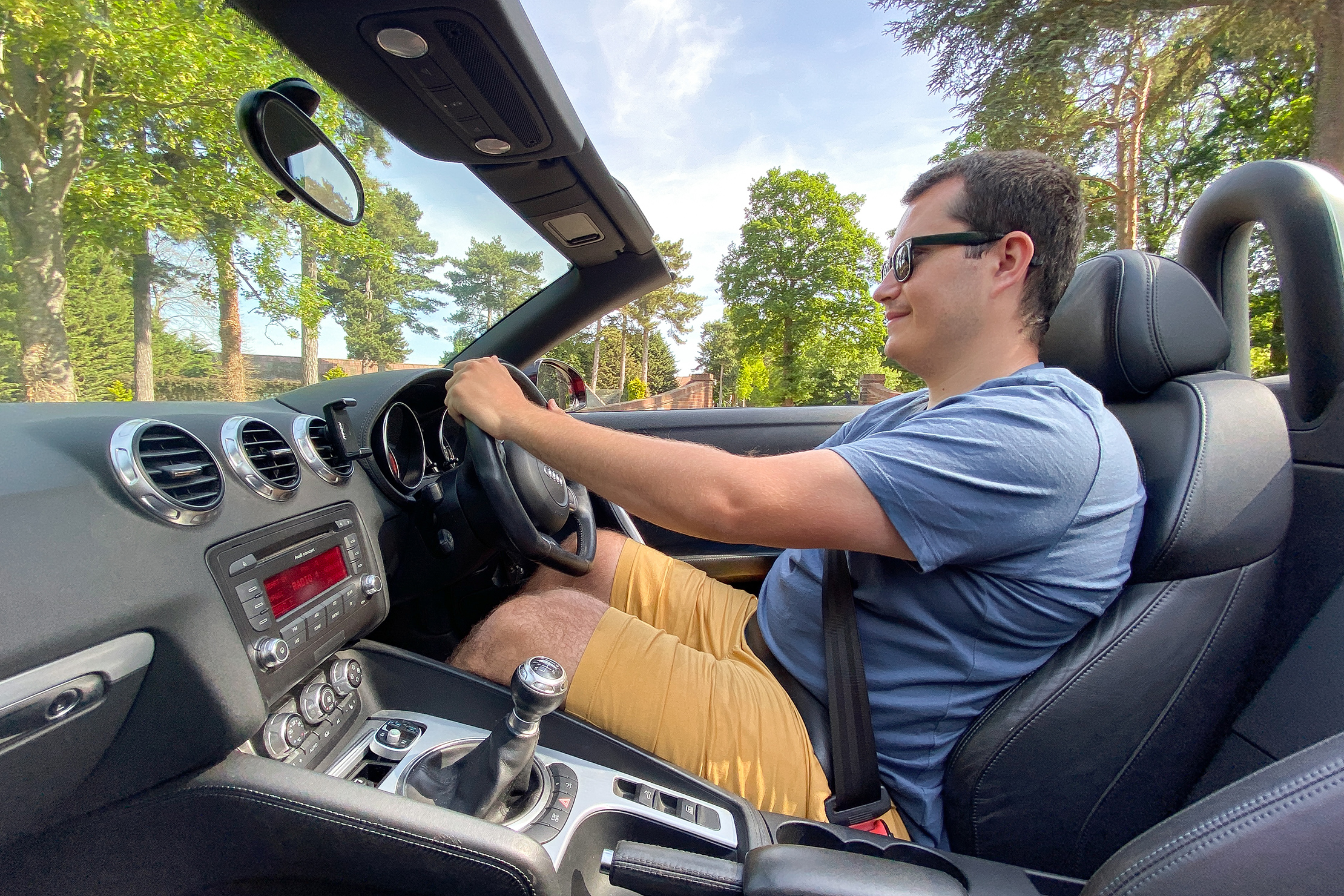
Long story short, there are some things you can do to make your road trip less of a misadventure and more of a good time. And, in this guide, we’re going to cover everything you need to know.
If you only get one thing out of it, be flexible. Actually, no. Pack snacks. A lot of snacks.
Why a Road Trip?
A road trip is the embodiment of the tired phrase, “it’s the journey, not the destination.” And, oh boy, can that journey be an interesting one.
We can’t prove this, but it seems scientifically impossible to embark on a road trip and not encounter any number of zany roadside attractions. Especially if you seek them out—and we highly recommend that you do. Our team members have encountered doll museums (not for the faint of heart), the world’s biggest Beagle (which is actually a hotel you can stay at in the U.S.), and a giant shopping market with giraffe statues hanging out on the roofs (the Traders World Market in Ohio, if you’re curious). You’ll also find several opportunities for bumper cars, mini-golf, and arcades.
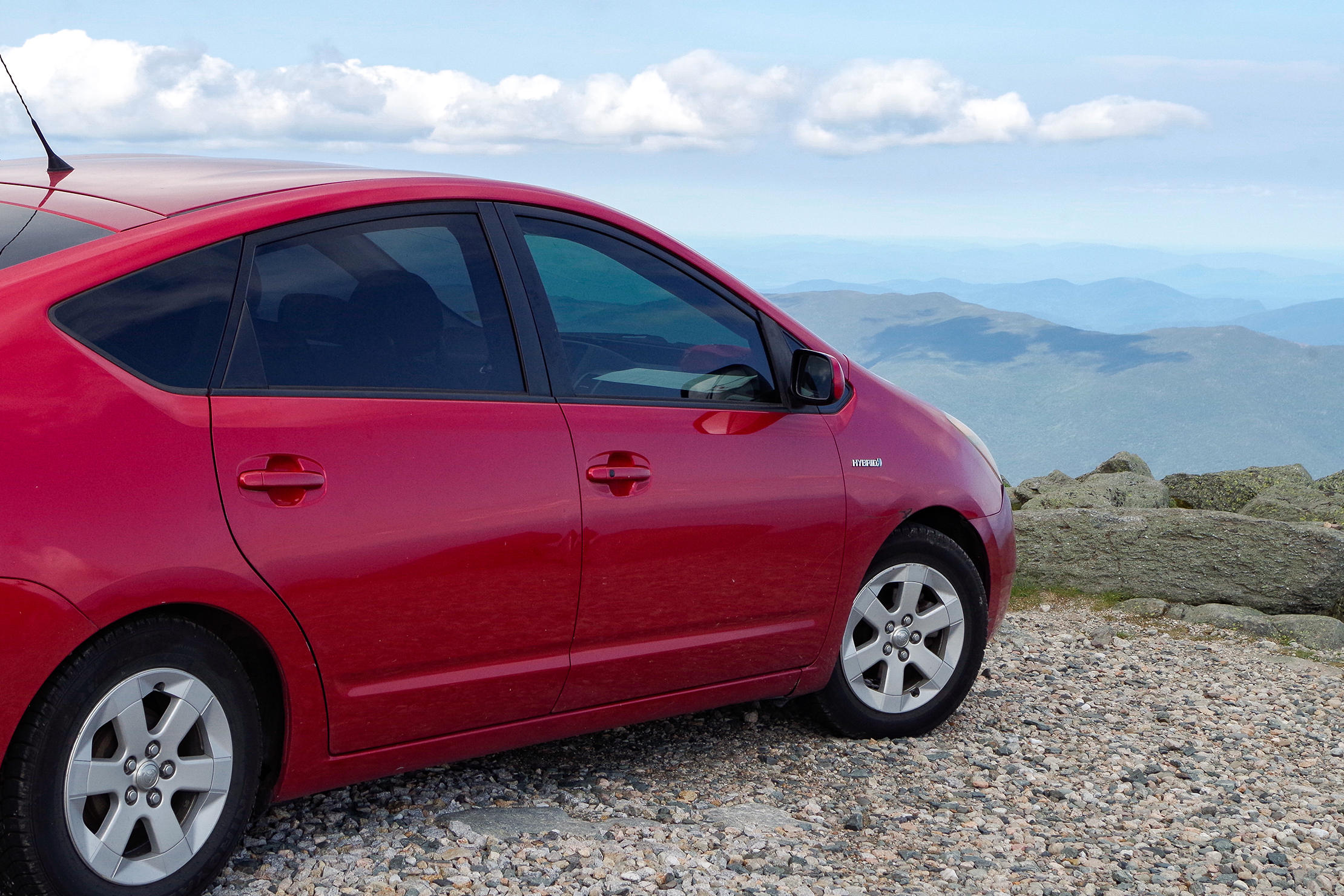
If “zany” is not a part of your vocabulary, road trips still provide a great opportunity to slow down and see more. You can stop and smell the flowers (literally). Take a couple of hours and hike at a local hotspot. Explore that antique shop on the side of the road. Or, don’t leave your car, and just appreciate the scenery blurring past your window. At the end of the day, road trips allow you to enjoy your route, instead of simply flying over it.
Still not convinced? Then, first of all, we’re impressed that you’ve read this far into the guide. And, second of all, there are more to road trips than the journey. Other road trip benefits include:
A sense of control
Road trips allow for a flexible schedule, which can be primarily made and then altered by you. Don’t like where you’re staying? Pack up the car and leave. Love where you’re staying? Forget the rest of the trip and stay. Wake up early one morning and sleep until noon the next.
You (frequently) don’t have to be at any specific place at any specific time. There’s not a plane, bus, train, or boat to catch. (Bonus Benefit: you can’t miss your flight.)
Budget-friendly
Road trips tend to be cheaper than alternative ways of traveling. Of course, this isn’t always true. But, frequently, driving to your destination instead of paying for a flight, will save you money.
Efficient
Most of us won’t want to spend the time, money, and energy to fly somewhere only for a weekend. But you can certainly squeeze in a road trip if you go somewhere a little bit closer to home. Sure, the next state over doesn’t seem as cool as traveling to another continent, but it can still be a really good time. And, hey, you may be surprised what adventures you can cook up in a relatively short drive.
Access
It may be difficult to get to wherever you want to go any other way. There aren’t airports everywhere.
Bonding with friends and family
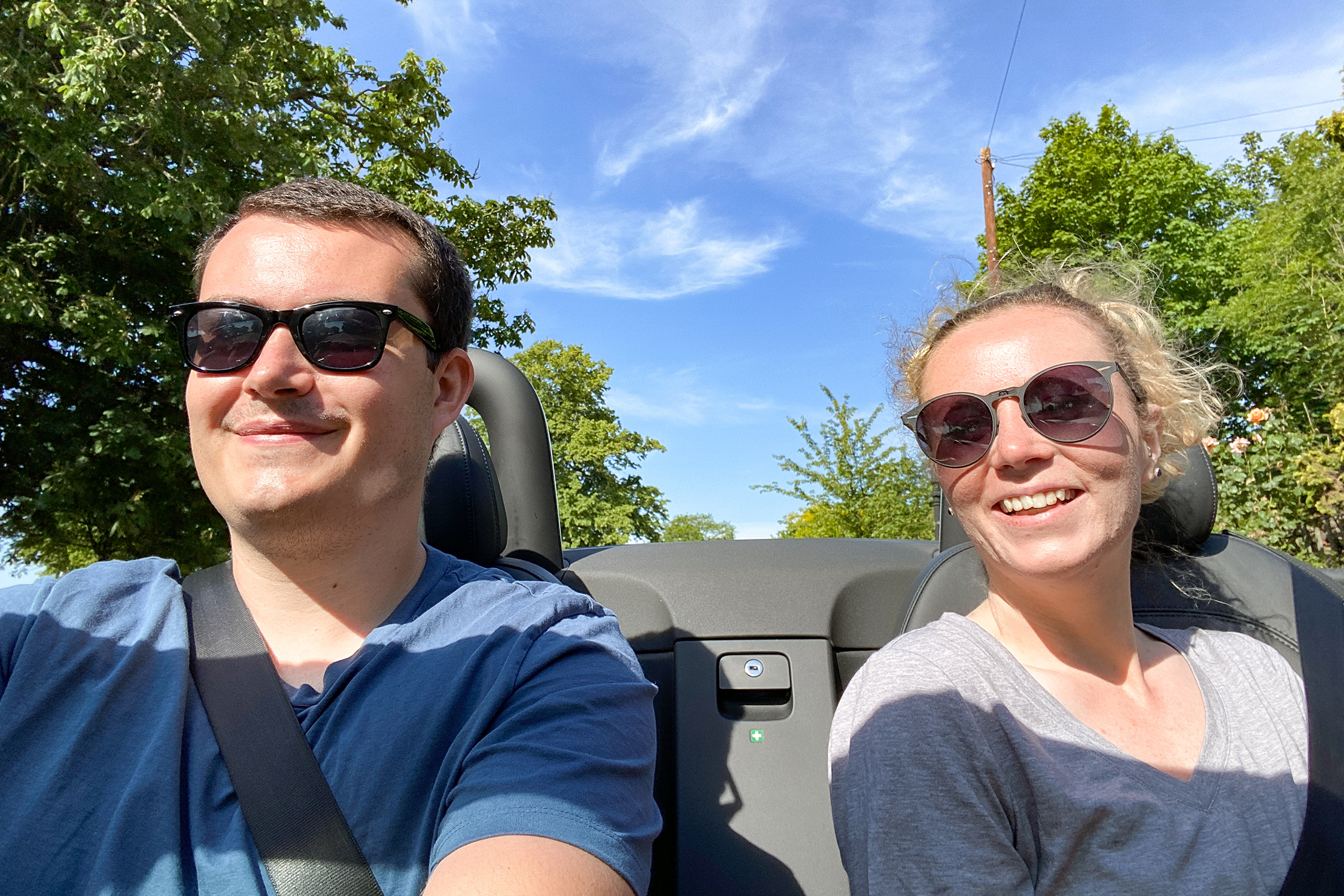
Don’t underestimate “windshield chats.” There’s something about sitting next to someone for hours at a time, staring out the windshield, that gets people to open up and talk about “deeper” things. Will your cousin tell you her secret dream of becoming a trapeze artist while sitting next to you on a plane? Probably not. But you better bet she will six hours into your fifteen-hour drive when the radio cuts out.
Sure, you could hop in the car and just start driving—but you may be happier with a plan.
Get four extra months of online security when you sign up for a 2-year plan with NordVPN! Check it out →
How To Prepare for a Road Trip
Choosing the Perfect Road Trip Vehicle
You can’t have a road trip without a car. So, step one, you need to decide what vehicle you’ll take cruising around the world (or, you know, to the next city over).

While you may find some strong opinions on the internet, there isn’t one road trip vehicle to rule them all. Much like the great cake versus pie debate, it comes down to personal preference.
If you—or one of your fellow road-tripees—aren’t fortunate enough to already own the vehicle you desire, you can always rent it. (Renting also works if you don’t want to put a ton of mileage on your vehicle.) That said, here are some factors you should take into consideration when choosing your trusty road trip steed:
Comfort versus gas mileage.
Some people will be willing to spend a chunk of change on gas in exchange for the legroom offered by a larger vehicle. Others would rather save their money and have tighter quarters. This depends on you and the folks you’re road tripping with.
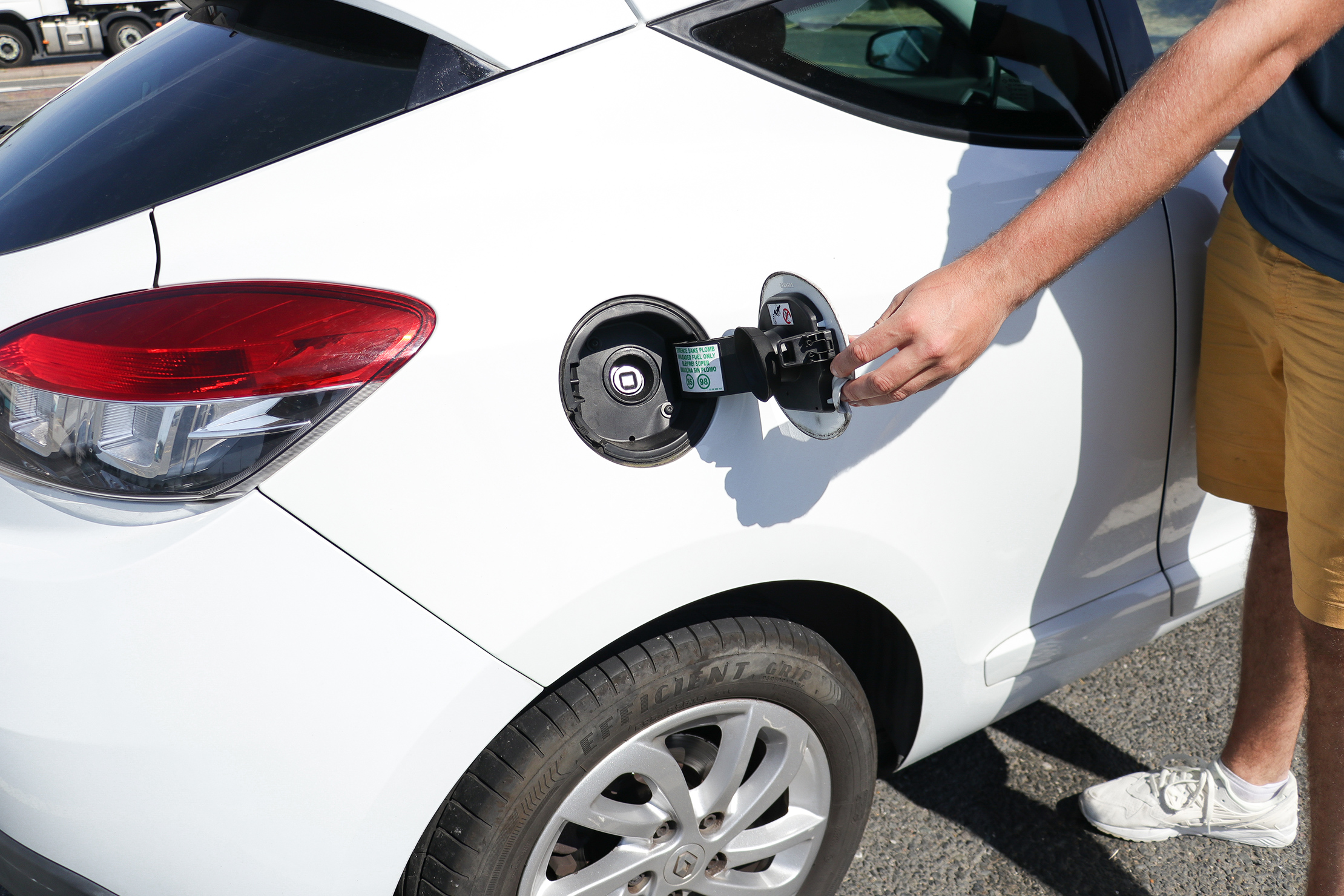
The length of the trip will play a factor here. But again, it could go either way. You may justify a bigger car for a longer trip since you’ll be spending more time in said car. Or you may have to stretch your budget out on a longer trip, so you’d rather save on cash.
Another factor is the price of gas at the time of your trip. This probably goes without saying, but we did say this guide would tell you everything you need to know, so…keep gas prices in mind before you rent that giant SUV.
Now, remember, bad gas mileage typically also means that you will have to stop more for gas (unless you have a gigantic tank). If you’re the type of person who likes to just go, then you’ll probably get frustrated by the fact that you have to fill up every couple of hours. If you like to stretch your legs often then you might enjoy having built-in, mandatory stops.
Keep your destination in mind.
If you’re planning on primarily driving through and stopping in cities, a small vehicle will be easier to navigate around those tight roads. Not to mention—the two words that are the catalyst for nightmares everywhere—city parking (dun, dun, dunnn).
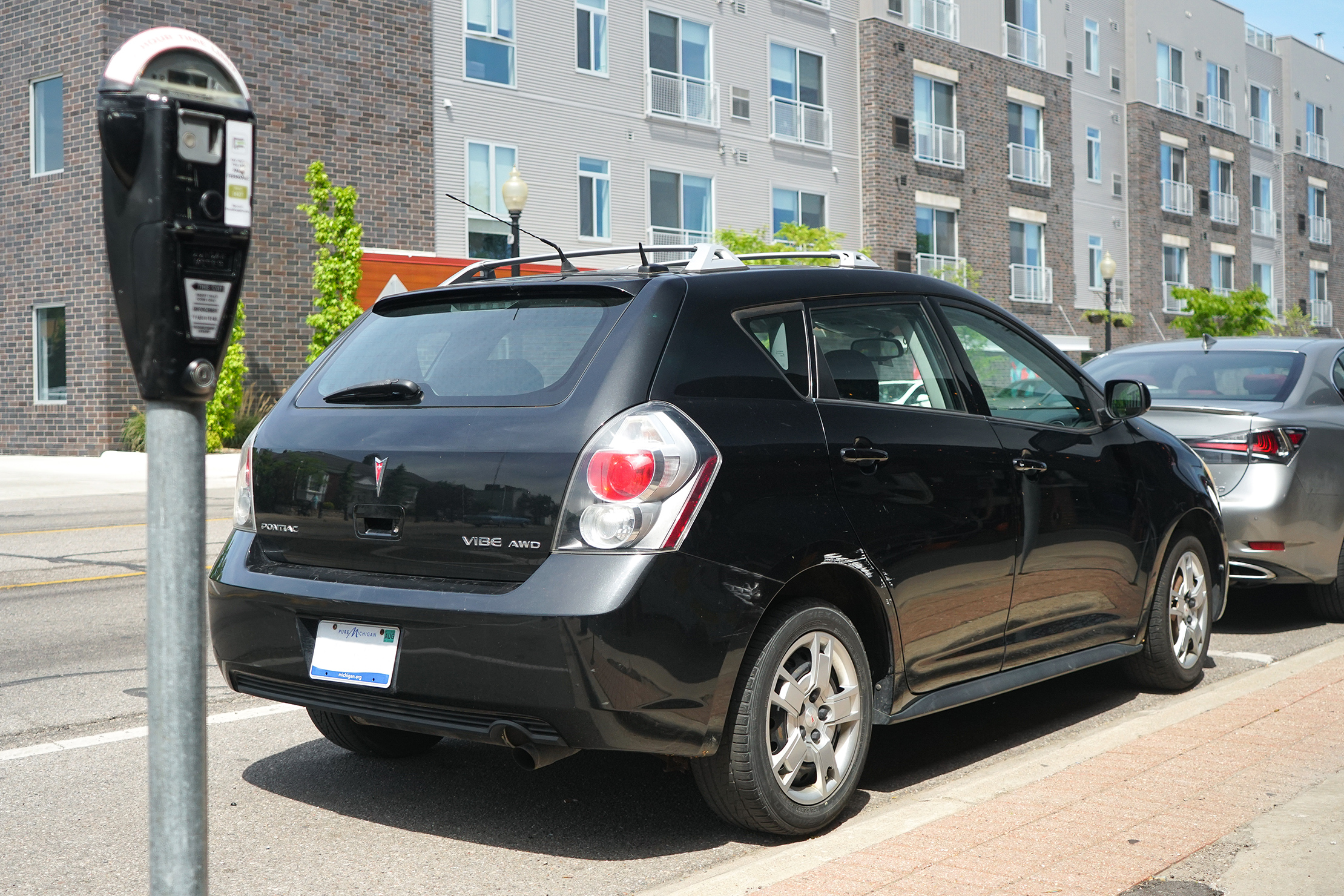
Conversely, you may want a bigger truck with four-wheel drive if you plan to traverse rural roads during a snowy winter.
Consider your use case.
You may be thinking, “What use case does a vehicle have other than driving?” Which is a fair question. Answer? You may decide to save money on accommodations by sleeping inside of your vehicle. We know, we know. This obviously doesn’t appeal to everyone. But it can be a good way to stretch your budget. We’ll talk more about how to find places to sleep in your parked car later on in our Accommodations section. But we wanted to point it out now as it’s a factor in deciding what vehicle to take on your adventure.
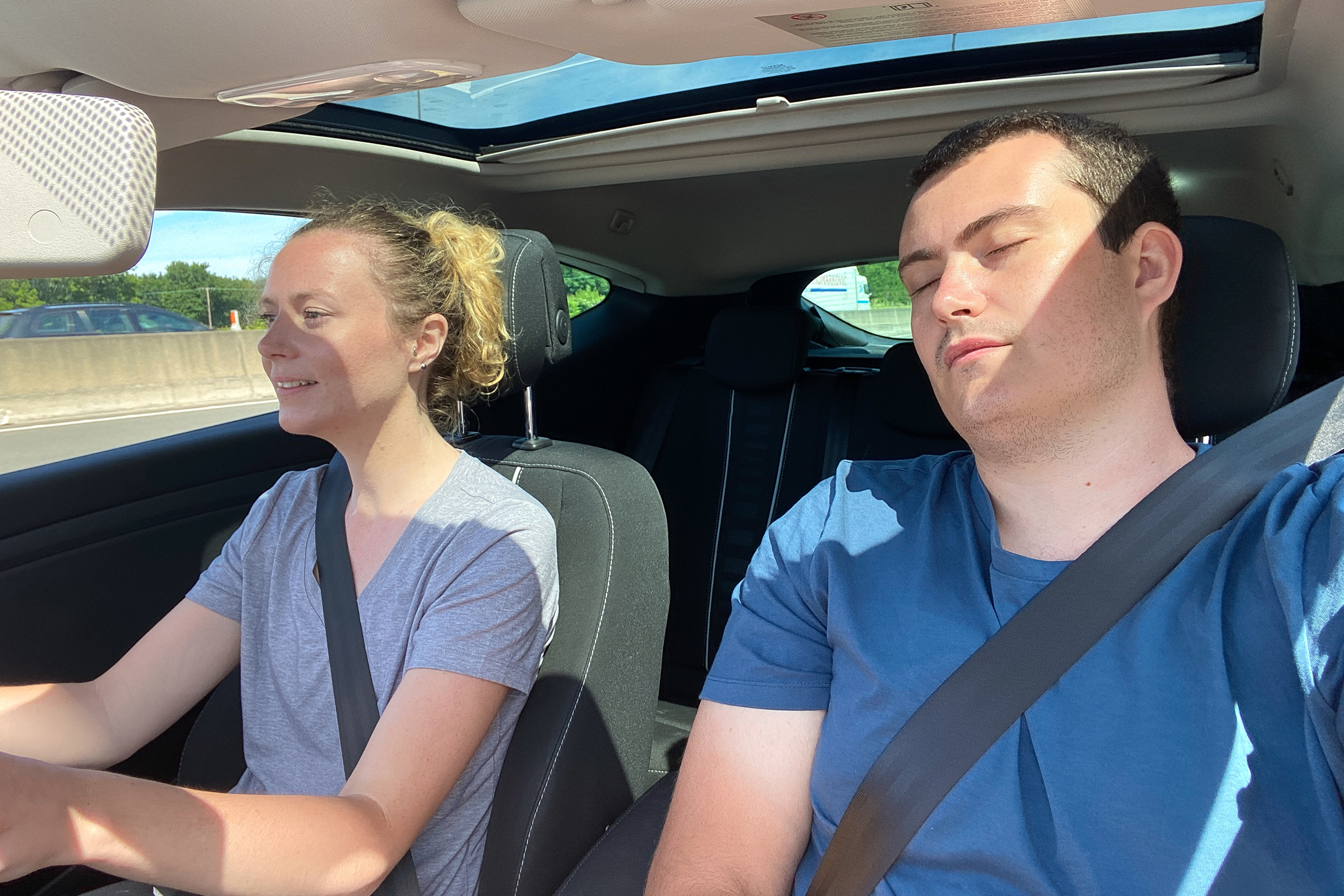
We’re starting to sound like a broken record here, but there isn’t one best vehicle to sleep in. It comes down to personal preference. If you plan to make sleeping inside of your car a thing then you may want to choose a car that has enough space so that you can fully lie down and straighten your legs. If you plan to sleep in your car once or twice, you may be able to get away with curling up in the front seat.
Preparing Your Car for a Road Trip
The level of maintenance you should do (or have done) on your car pre-road trip depends on how long you’ll be on the road.
Regardless of the length of your trip:
Everyone should at least check their tires and oil. That’s just basic car care. It’s also not a bad idea to keep a spare tire in your car and the appropriate tools to change it (also, consider learning how to change a tire if you don’t already know). And, you know that manual you threw in your glove box and haven’t looked at in years? Yeah, it’s a good idea to make sure that you still have it. It can come in handy if your car starts making a strange noise that may or may not sound like there is a ghost trapped in your dashboard.

Additionally, we suggest paying for a roadside assistance service (think AAA Roadside Assistance or Good Sam Roadside Assistance…but do your own research). It’s super helpful to have in emergencies. This is especially true if you’ll be going on a longer trip. Speaking of which—
For longer trips:
If you’re going on the road for any duration of time—a couple of weeks or more—it’s smart to have a mechanic check everything out and give you the okay. Road trips can be stressful. Knowing that a mechanical issue isn’t likely to arise while you’re cruising down the highway gives you great peace-of-mind. We also suggest getting your windows tinted (we’ll talk about why this is a good idea in the Safety section of this guide).
If you will be sleeping in your car:
There are a few additional steps to take to make your car ready to sleep in. You may want to build a platform in the back of your car to lay on. The specifications of the platform depend on your vehicle. There’s a ton of information out there on the world wide web about how to make these platforms, so we suggest getting started with some good ole fashioned internet research.
You also may want to create “screens” for your windows, so you can get some air at night without inviting mosquitos inside of your car. You can buy mesh or netting at a home improvement store and secure it over your windows with tiny, but strong magnets. If you want to get fancier than that then, once again, we suggest highly specific Google searches.
How To Plan Your Route
Okay, so we’ve talked about the road aspect of a road trip (i.e. your car). What about the trip part? Where should you go? And how should you get there?

There are numerous ways you can plan a road trip. We’ll talk about the two main ways.
You can plan your route first. Create a loop based around family and friends you can visit. Or around adventures you want to do—like rock climbing, running, kayaking, or visiting all of the U.S. National Parks. With this technique, there’s no specific place that you’re road-tripping to. Instead, there’s a series of places.
The second way is to plan your destination first and work backward from there. Say you live in northern California and want to visit Banff, Canada. You can pick spots to stop at along the way—Crater Lake National Park in Oregon, the Cougar Bay Preserve in Idaho, and the Fairmont Hot Springs Resort in British Columbia, Canada for example.
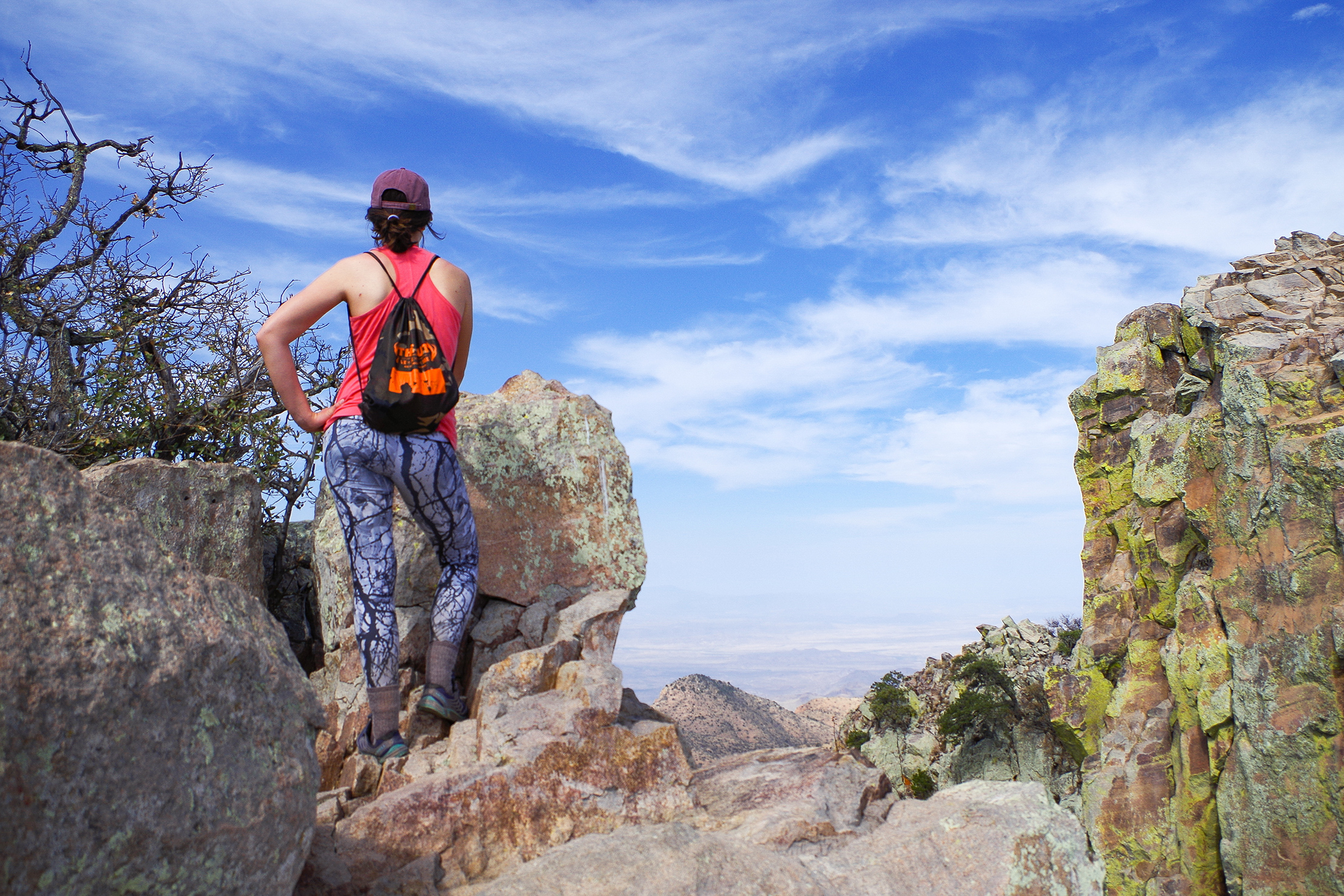
Road trip planners can help you plan your trip either way, but especially if you have a specific destination in mind. Websites like RoadTrippers and Rand McNally’s TripMaker allow you to create a full itinerary—even offering suggestions for interesting places along the way. There are also books you can pick up with route and activity suggestions for various areas around the world.
But, you can also just google road trip ideas in [wherever-you-want-to go] area. For example, road trip ideas in West Texas, U.S. They’re often a great way to get started, even if you don’t follow the route exactly.
Regardless of how you go about planning your trip, you need to double or triple check your math. Say you have seven days and your final destination is a nine-hour drive away. Decide if you’re going to hit every stop on the way to your destination and just haul tail back (asking yourself if a 9+ hour drive in a day is doable for you) or vice versa. If you go with the first option, you need to account for a travel day at the end. Then decide how long you want to be at your destination. If it’s three days then—keeping in mind your final travel day—you have three days to drive to that destination. Is three days enough time? Too long? Tweak your schedule.
This seems very obvious, but it can get tricky. It’s easy to do the math incorrectly. You’ll also want to keep in mind “recovery” time after your road trip. Take that 7-day trip example. If you’re expected to return to work on Day Eight—and you planned Day Seven as a nine-hour driving day—you’ll likely get home late at night, exhausted, and, let’s be honest, not looking or smelling your best. Will you be able to effectively work the next day? Is it a better idea to end your road trip one day earlier? Maybe, maybe not. But you should at least actively choose to show up to work exhausted and bleary-eyed (instead of accidentally because you’re terrible at math).
How To Plan Activities
Once you have a vague route, spend some time researching fun things to do along it. If you’re stuck, we suggest those aforementioned road trip planners. Or you can always google “fun things to do in [name-of-city-that-you’ll-be-passing-through].” Make a list of “musts” versus “would-be-nices.” Once you’re on the road, you may end up with more time than you’re expecting. Other times, the opposite.
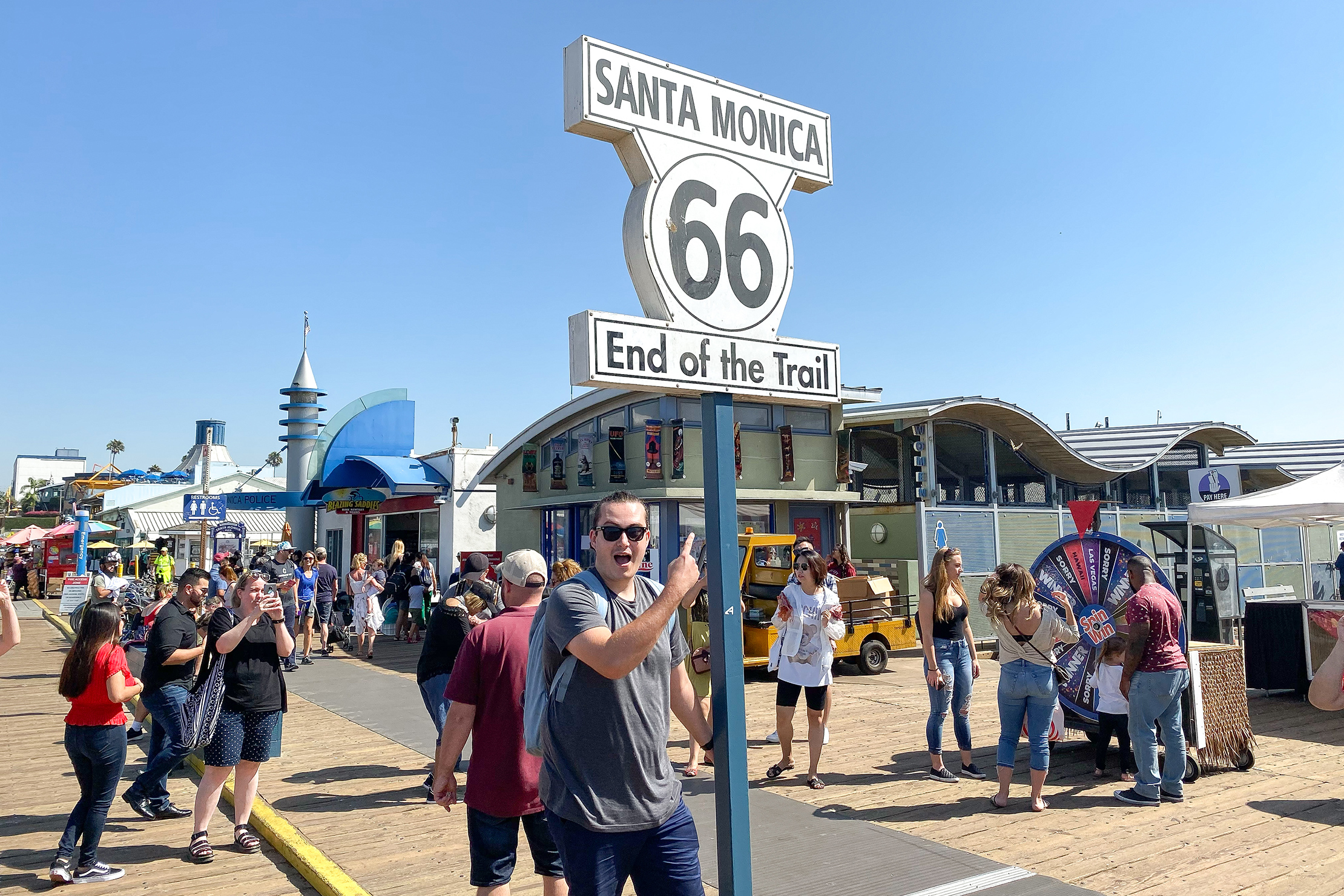
Remember that you may never get back to these places, especially if they’re harder to reach by other modes of transportation. So splurge on activities when you can. Take that boat ride in the Everglades because when are you ever going to go back to the Everglades?
How To Plan With a Group of Friends
Create a Google Doc or Sheets (depending on the type of person you are) and share it with your group. Some road trip planners also have sharing functionality built-in.
Come up with your route. Then add possible fun things to do. Everyone in your group should indicate what they consider a “must.” You may not think that the rodeo clown museum is an important stop, but your best friend might only be embarking on this road trip to learn about rodeo clowns. Finally, add possible places to stay along the way, indicating if you have to book them in advance or if they’re okay to just show up at (you can figure this out with some good ole fashioned research).
It’s frequently easier to have one person take charge of the loose plan with others adding their thoughts afterward. If one person is planning, others in the group should be responsible for booking accommodations, grocery shopping, getting the car maintenance done, and so on.
Road Trip Planning Tips
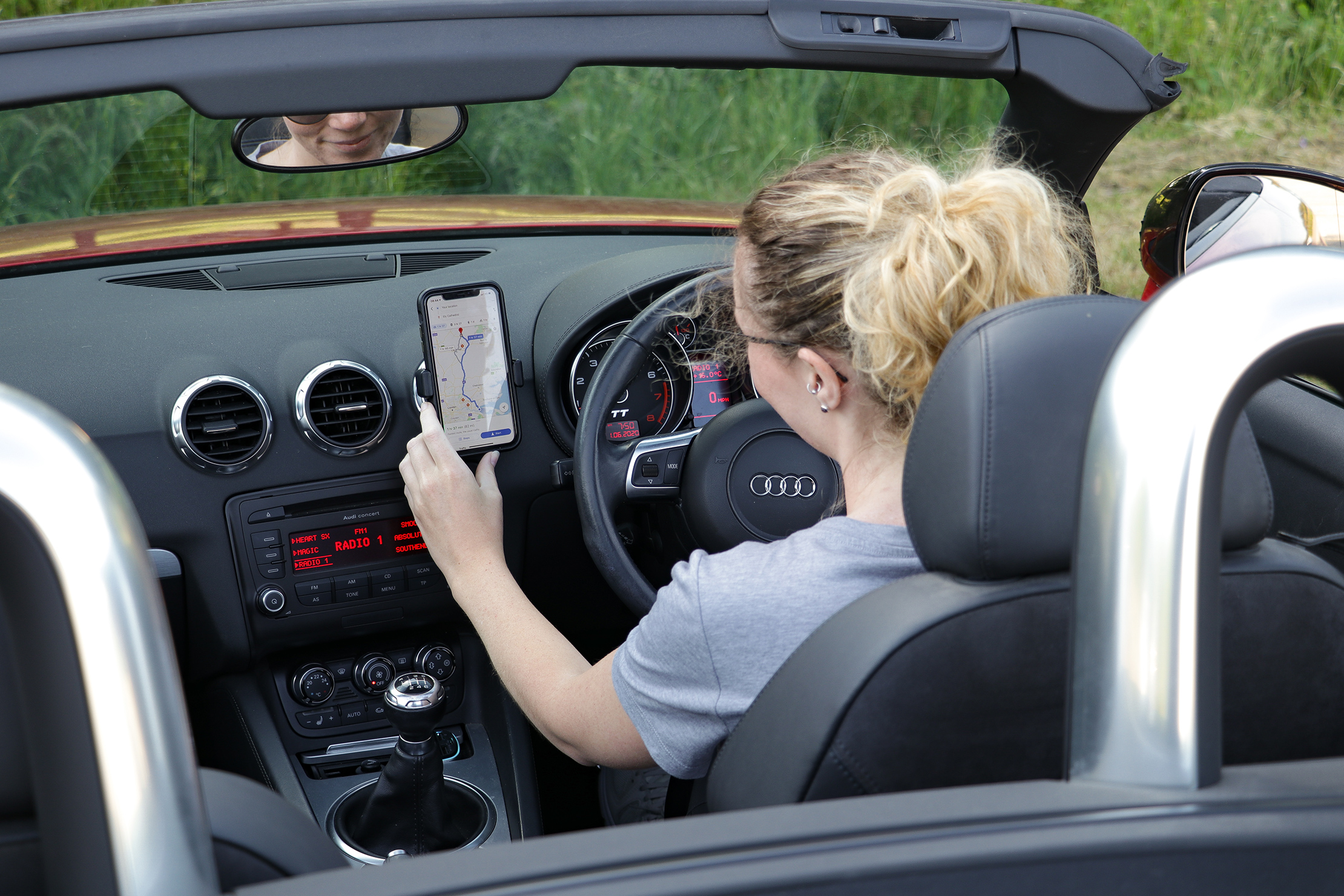
Driving is going to take longer than you think.
If Google says it’s a four-hour drive, expect it to take five or six with stops and things going awry. It’s easy to theoretically know this tip, yet still plan around Google’s time suggestions. Don’t do that. It will lead to showing up to an unfamiliar campsite in the dark, getting hangry because you thought you would stop for dinner in that town only four hours away and here you are six hours later not at that town, and many a preventable argument.
Don’t feel like you need to keep driving days equal.
Sometimes, it makes more sense to drive an hour one day and eight hours the next. Remember, the beauty of the road trip is flexibility. Plan, but leave room for spontaneity.
Keep season in mind.
By “season” we mean both weather and time of year. You don’t want to end up in New Orleans on Saint Patrick’s Day (unless you do). And the weather can make or break a trip. Pay especially close attention to rainy seasons. While there can be intrinsic benefits to other kinds of inclement weather—snow or excessive heat—rain is just a bummer (at least for us). There’s nothing worse than being stuck in your car/hotel/tent while it’s pouring rain outside. Avoid it when you can.

Keep your budget in mind.
Certain areas are financially harder to road trip through than others. For example, if you’re going on a tour of French cities, you’ll likely have to rely on hotels and Airbnbs—which can be pricey—more than a drive through rural France where you can camp. (We’ll discuss more about accommodations later in this guide.) Cities will also have more expensive parking, which will add up.
How To Prepare Entertainment for a Road Trip
We’ve already mentioned the concept of windshield chats. But, let’s be real, conversation alone is probably not going to cut it for a ten-plus hour drive. So let’s talk entertainment.
Audiobooks
Road trips are a great way to get your read (listen) on. But, be picky. If it’s a boring book, it’s going to be even more of a boring book on the road—it’s basic physics.
Also, be careful about subject matter. It’s probably not a good idea to listen to an eerie book about a rural cabin and a sociopath while driving through the backroads of northern Florida (um…not that that’s happened to any of us).
Make sure to download the audiobook fully before you get out of a WiFi zone or cell reception. Trust us. We’ve had good luck using Libby (you’ll need a library card for your local library) and Audible to find audiobooks.
Music
It can be incredibly fun to crank up local radio stations to help you get a feel of the area you’re driving through. But it’s not a good idea to solely rely on the radio as it frequently cuts out. (And, perhaps, the feel of that area is not your jam.)
Consider paying for a premium subscription (or nabbing a free trial) of the music app of your choice. Listening to ads—and not being able to skip songs—gets old, fast. Plus, most (if not all) services don’t let you download songs on the free version.
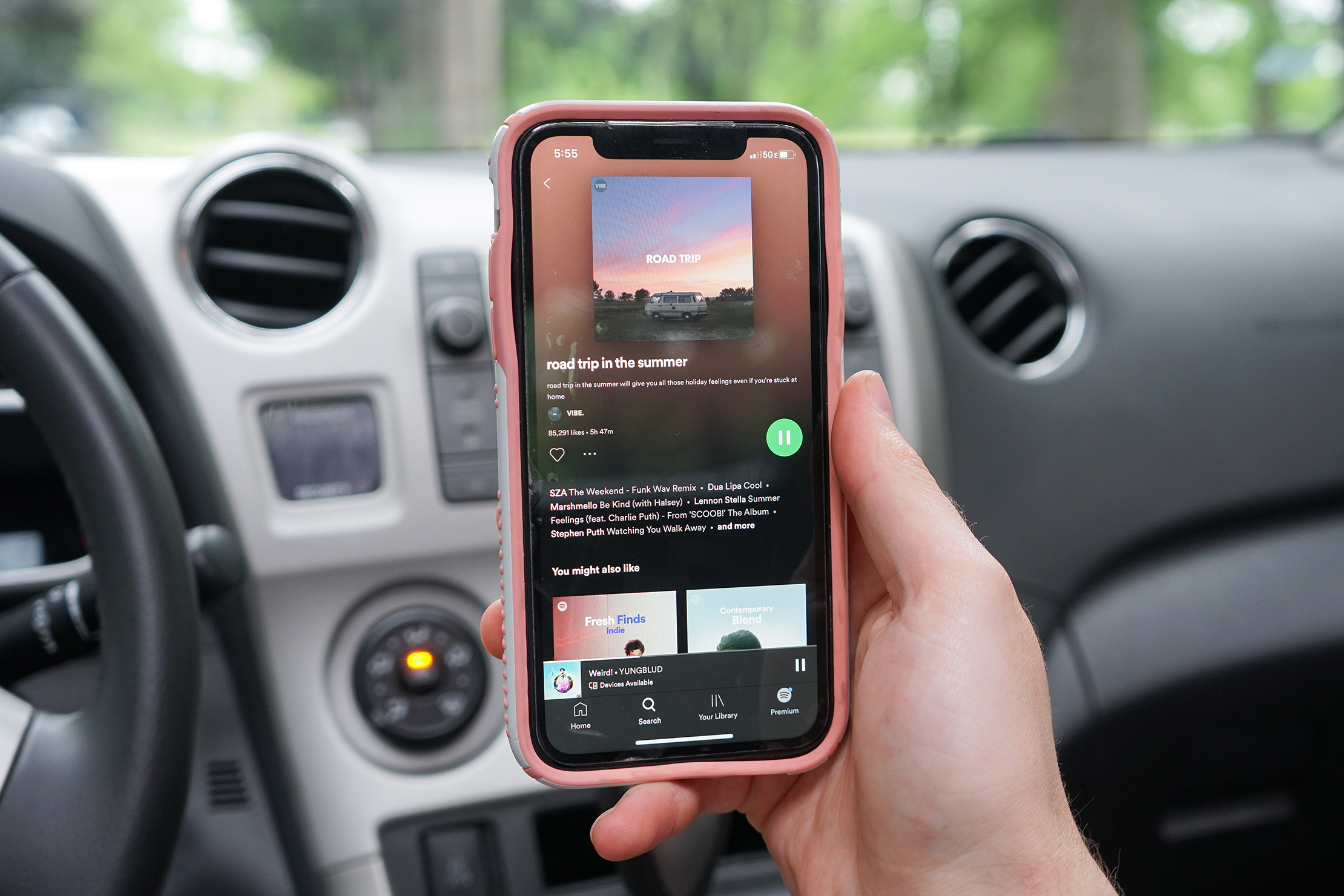
It’s really fun to have a specific road trip soundtrack. Certain songs always bring us back to driving down country roads, the speakers blaring, the sun setting over the mountain range…Whoops, sorry, got lost there. The point is—create a playlist. If you’re road-tripping with another person or a group, you can all add to one mega playlist. Spotify is a good resource for this. It even has road trip playlists already created if you can’t be bothered to make one. But, we highly suggest you make one—and make it themed. Some suggestions to get you started:
- Dad’s favorite rock ballads
- F*ck the system punk
- I-will-not-stop-this-car-until-we-reach-our-destination 130 bpm techno beats
- Boy bands
- British boy bands
- Y2K 4EVR
Again, make sure you download your groovy playlist(s) ahead of time.
Other:
- Podcasts: There’s a podcast for everyone these days—whether you’re a true crime buff, interested in learning a language, or really, really, really love cheese.
- Activity bags: This is primarily a tip for you road-tripping parents out there, but some adults may respond well to activity bags too. Fill them with puzzles, road trip bingo boards, Mad Libs, stickers, etc.
- Road trip games: You can also bring back those classic car games like the Alphabet game, iSpy, and 21 Questions.
- Movies and/or TV shows: You can download movies or shows onto your phone/tablet to help those who aren’t driving pass the time. They’re also handy if you ever plan to sleep in your car. There’s not much else to do in a Walmart parking lot at 10PM.
Final Things To Do Before You Leave
Let your bank know where you’re going.
If you skip this step, your bank may freeze your card. It’s well-intentioned, of course, but can be a huge pain, especially if you’re out of the country. This happened to a Pack Hacker team member after she bought gas at a random tiny gas station in rural Canada. And because she was out of her home country, it took a long time to activate her card. Don’t be this team member.
Get cash out.
You’ll need it for tolls or in small-town stores that don’t accept cards. Replace your cash stash whenever you spend it.
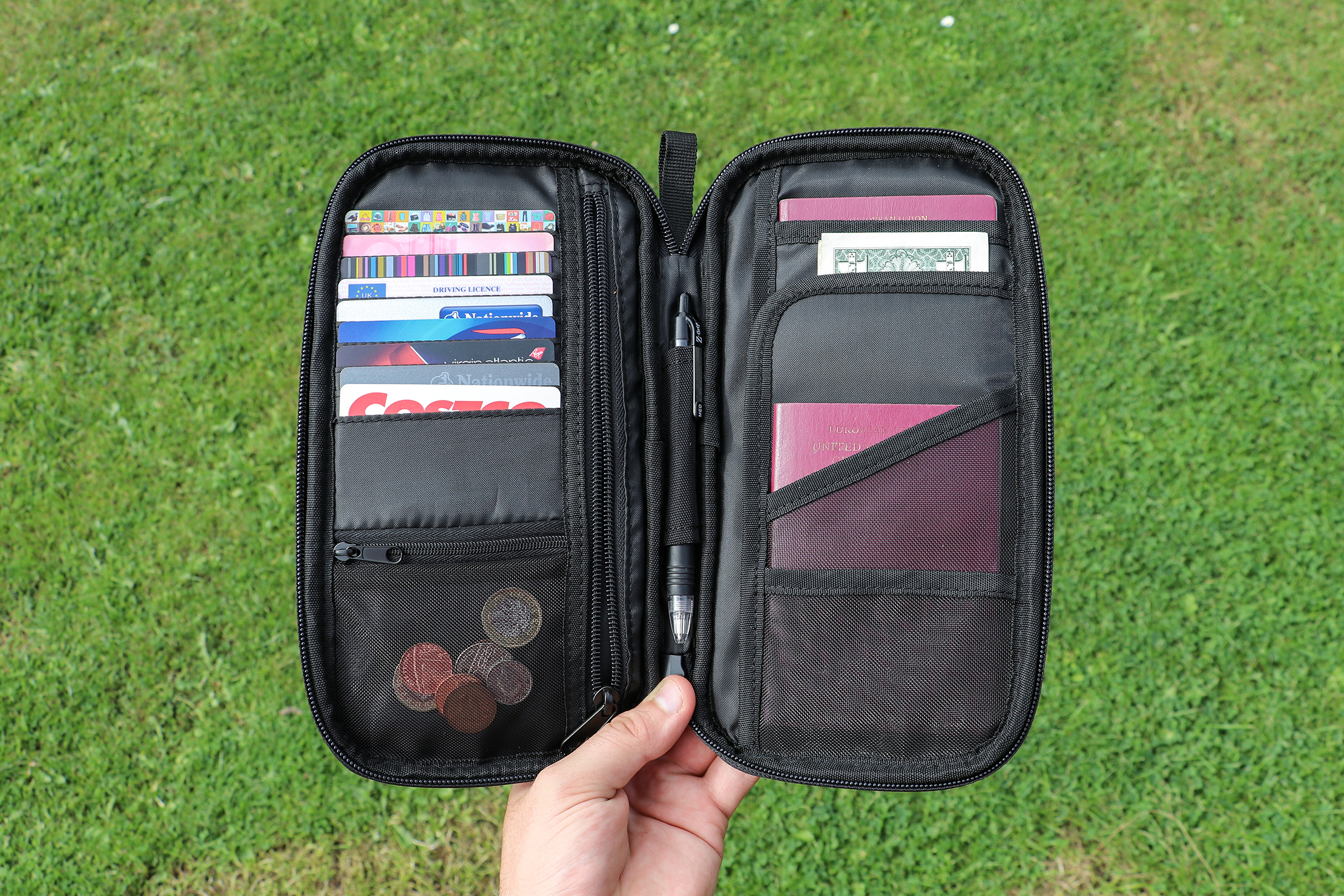
Consider motion-sickness.
This is especially true if you get car sick easily. But even if you don’t, you’ll likely encounter winding rural roads on your travels that will test even the strongest of stomachs. We’re not pharmacists, but we’ve found luck with Dramamine. If Dramamine isn’t your thing, there are a ton of other options out there. Anti-nausea bracelets, ginger chews, etc. Do your research, talk to your doctor, and find what works best for you.
Hint—more than beef jerky and sunglasses, less than the entire contents of your closet.
Get four extra months of online security when you sign up for a 2-year plan with NordVPN! Check it out →
How To Pack for a Road Trip
What To Pack for a Road Trip
It can be tempting to fill up every nook and cranny of your car. After all, you’re not limited by airline restrictions. But resist the urge! Seriously, resist it. Try to be as minimal as possible. We abide by this rule no matter what kind of traveling we’re doing. We’ve found that less stuff leads to a clearer mind—you have more time to be focused on your adventures. Usually, you only end up using a small amount of stuff, anyway.
You can always pick up more supplies along the way if you feel like you’re missing something. Trust us, it’s very annoying to have to dig through all of your stuff to get to what you’re looking for. Especially if it’s things you haven’t been using. Plus, less stuff = more legroom.
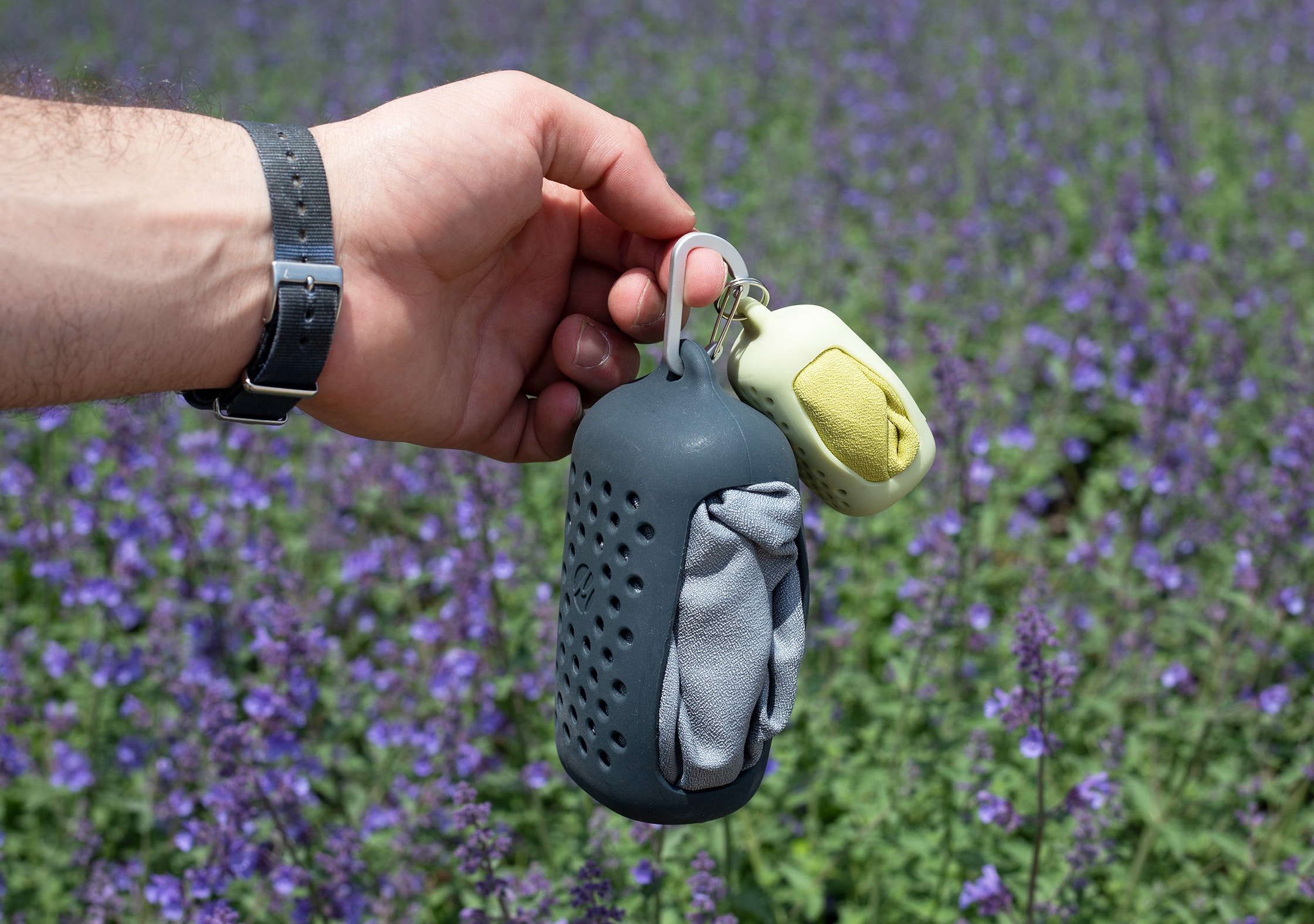
You can save space by packing the right gear. For example, bring an e-reader instead of a couple of books, a packable travel towel instead of a regular towel, etc
Moreover, we suggest making a handy, dandy packing list. A list will keep you from throwing everything and the kitchen sink into your car. It will also help you remember the essentials—insurance, registration, driver’s license, car manual, etc. The obvious stuff that can be easy to lose in the chaos of packing. A list will also help you with any insurance claims if anything becomes lost or damaged. Just make a list, okay?

If your road trip will involve going into another country, be sure to pack that stuff—passport, insurance, or other specific things required by the countries you’ll be exploring. Keep in mind you can’t bring certain foods (and other goods) across a number of borders.
If you’re embarking on a longer trip, reassess after a couple of weeks and get rid of (donate or ship to a family member) all of the stuff you don’t end up using.
How To Pack Your Car for a Road Trip
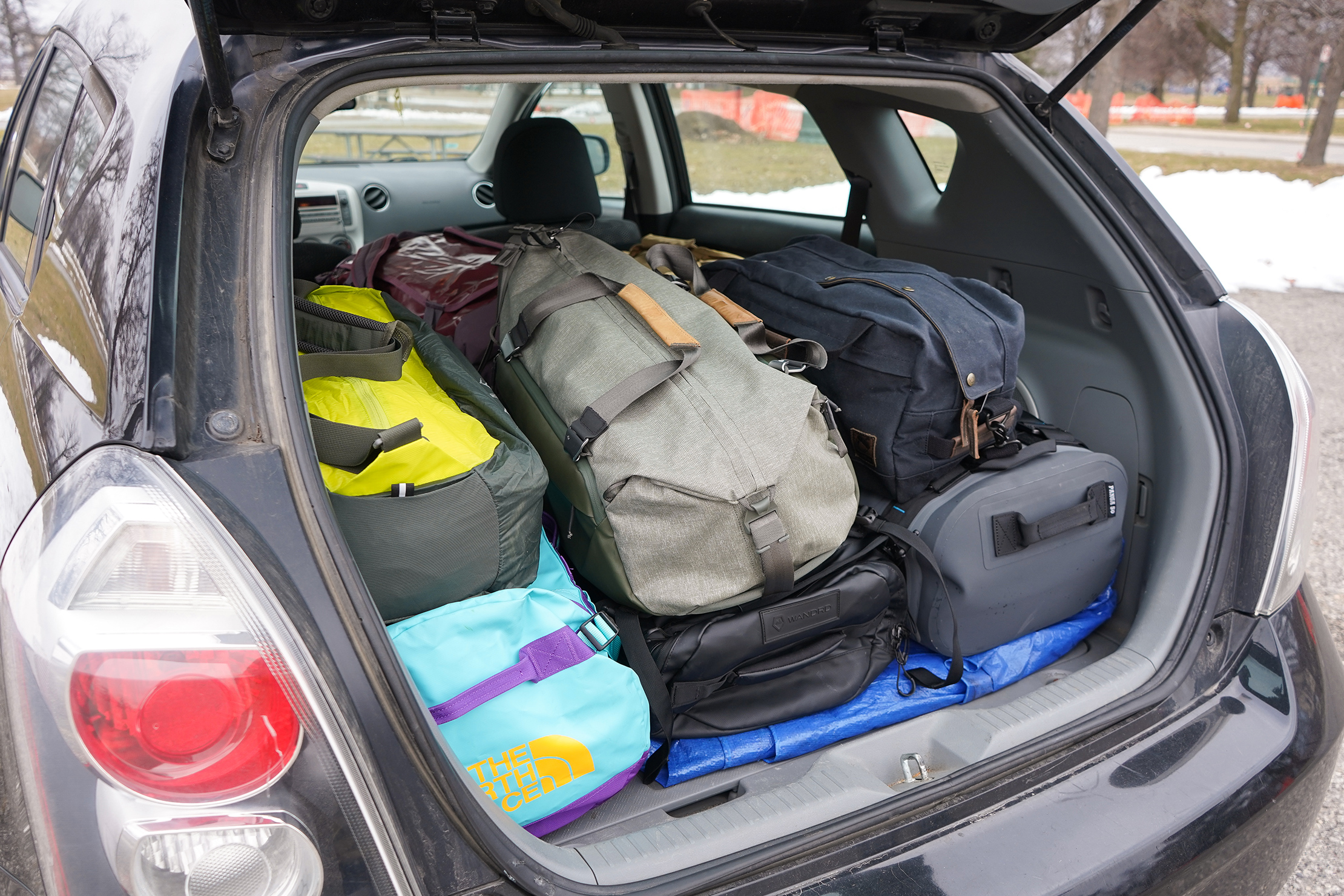
You don’t have to be as strategic packing your vehicle as a carry-on backpack—you have more room to play with—but there is more strategy involved than you might think. If you’re a Tetris fan, get ready to have the time of your life. Pack all the stuff you won’t be reaching for—specialized clothing, tools, laundry soap, etc first and in those hard-to-get-to places. Snacks, money, sunscreen, and the like should be easy to reach. Items like an emergency or first-aid kit should be easy to grab when an emergency strikes, but out of your way because—hopefully—emergencies don’t happen every day. Think glove box or middle console.
Create some kind of organizational system—even if it seems totally chaotic to everyone who isn’t you and your fellow road-tripees. Everything in your car should have a spot, so it’s easy to keep your car in order and find whatever-it-is-you’re-looking-for quickly. That spot can simply be “back left corner of the car next to the clothing duffle bag.” You don’t need to color code the back seat with sticky notes or go wild with the label maker (unless you want to, of course).
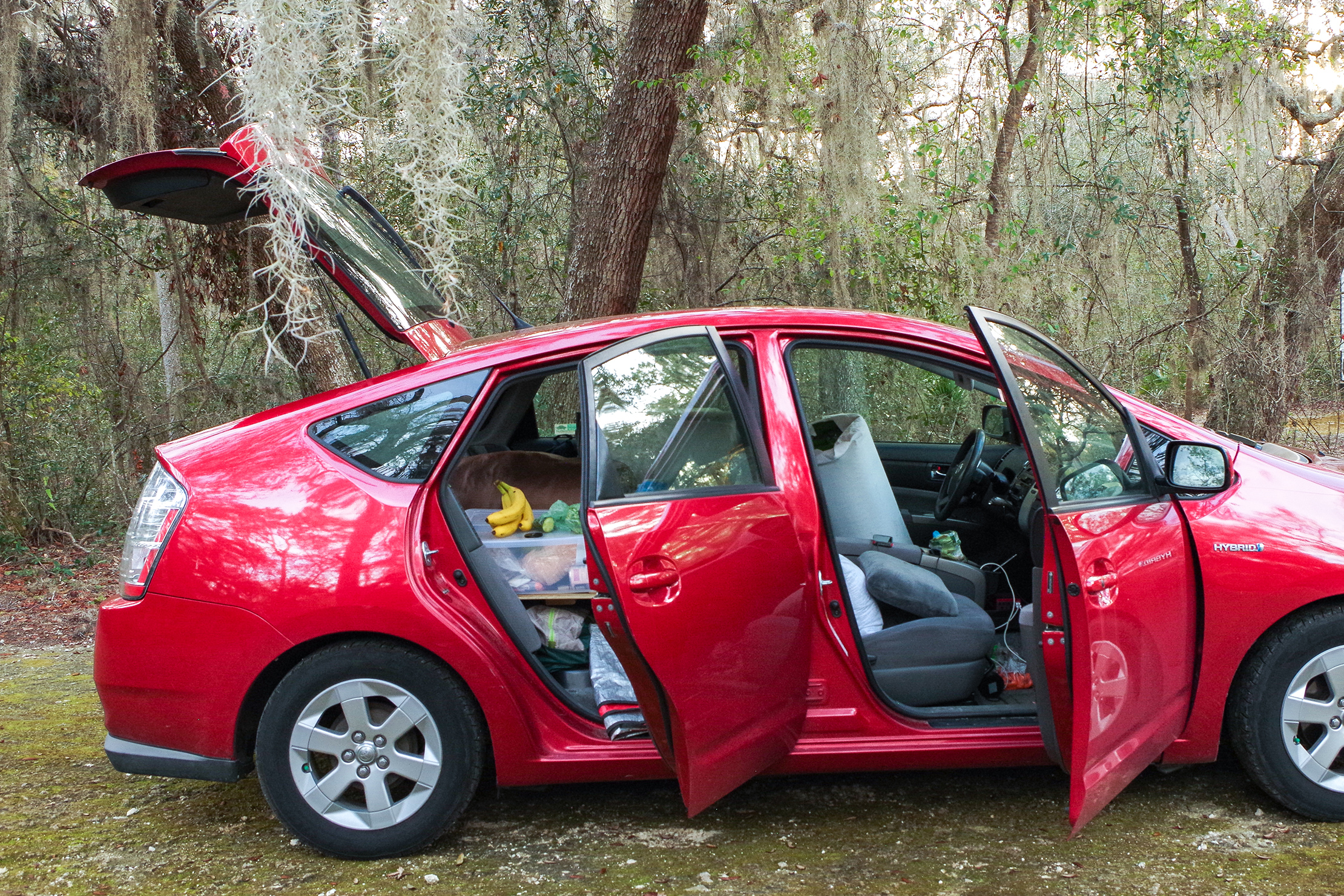
Note that it is especially important to have a spot for your wallet, keys, and phone (when your phone is not in use). Trust us, it’s the worst to lose your keys in a fully-packed car. We suggest you keep this kind of stuff inside of a sling bag or purse. That way, you always know where these essential items are and can easily grab them when you leave your car.
And don’t be afraid to repack your car once you’re on the road. You’ll probably do it wrong the first time because it’s difficult to know what items you’ll be reaching for frequently. It changes from road trip to road trip. On one trip you may need to use your Tide to Go Pen every day, so you need to keep it in an easily accessible place. While on a different trip…wait, no. You’re always going to want to keep the Tide to Go pen accessible.
We’ve found that Duffle bags are great for hauling the majority of your clothes while on a road trip as they’re typically easy to pack—both in terms of throwing in your stuff and Tetris-ing in the car. We also suggest that you pack a daypack. This backpack can be used for a myriad of things. Use it to store a pair of clothes, PJs, and toiletries to take into overnights at Airbnbs or hotels (without having to lug your entire week’s worth of clothes inside). You could also use it to carry your tech stuff (say a laptop) if you ever plan to go to a coffee shop and get some work done. Moreover, you could also use this pack for day trips (including hikes).

If your road trip is longer-term—consider separating your everyday clothes with a few pairs of nicer clothes. It’s surprising how quickly you can get grimy on the road, especially if you’re camping or have long days in the car. It’s really nice to be able to do a quick wet wipes “bath” and change into a clean pair of “nice clothes”—which could be jeans and a t-shirt—so you can go into a coffee shop/out to dinner/into the grocery store without being self-conscious. But this only works if you actively save your nice clothes for said occasions and switch back into your everyday clothes right away.
How To Manage Food for a Road Trip
Road trips frequently require thinking on your feet, which isn’t so easy to accomplish when your stomach is grumbling. Moreover, an empty stomach + being in a confined space with a group of people + the stress of travel = biting comments and pointless fights. Avoid pointless fights by packing snacks. All of the snacks. This becomes super important if you have any dietary restrictions—vegan, gluten-free, nut allergies, etc. While it’s easy to find gluten-free food in cities, it becomes harder off the beaten path.
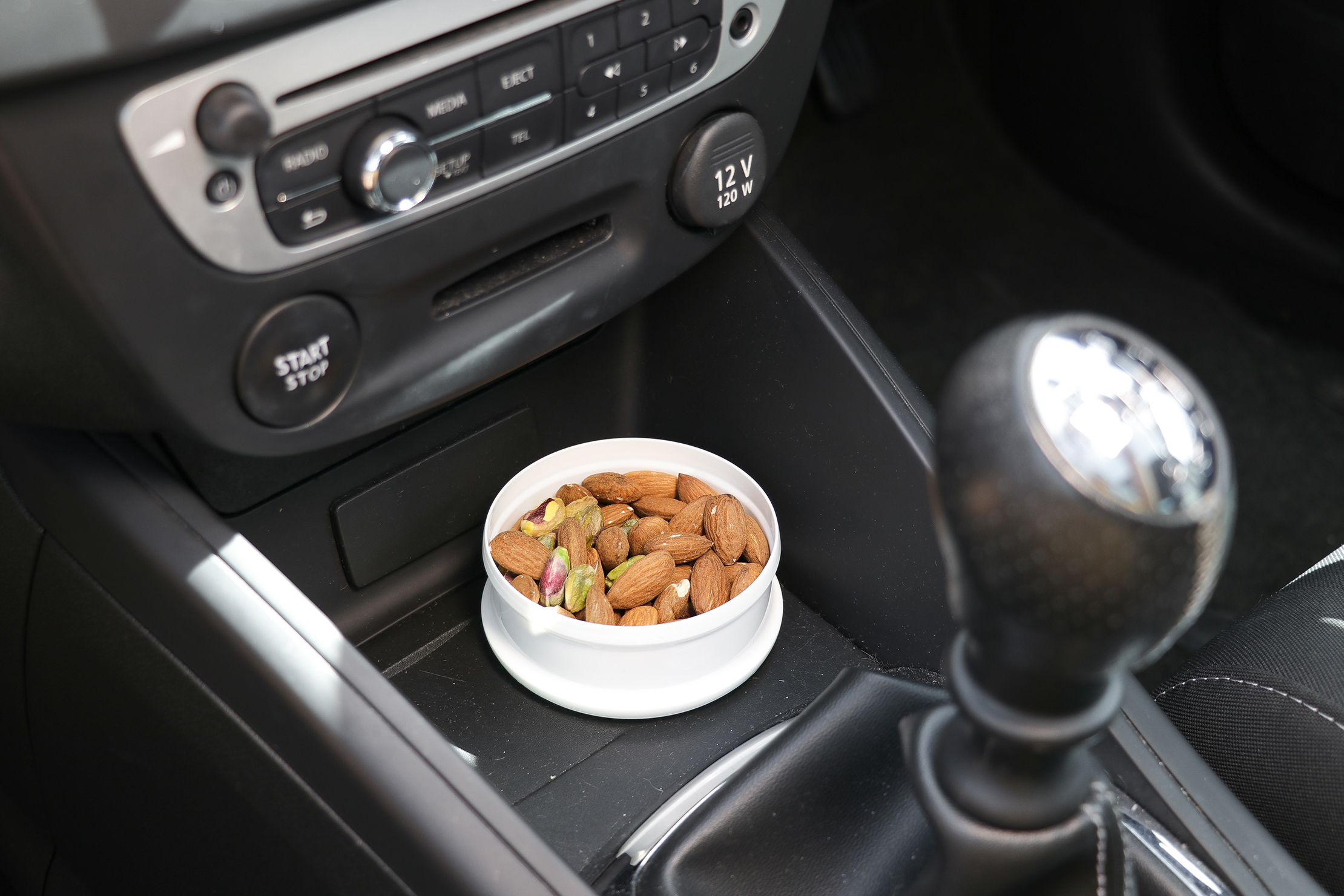
Now, if you are going on a shorter trip, you (likely) won’t need to pack any more food than some granola bars, chips, and jerky (or your snacks of choice). And, for really short trips, you can just nab snacks from a gas station and call it a day. If that’s you, you can go ahead and skip to the next section. But if you’ll be on the road for more than a couple of days—or you’re a really picky eater/have dietary restrictions/don’t like to eat out/will be traveling through rural areas/plan to camp—then let’s talk about eating on the road.
First of all, we suggest bringing a packable tote or reusable bag for grocery runs. Plastic and paper grocery bags add up (we think they may breed with each other?) and will make your car a disaster. Plus, you know, the environment. And, when you’re checking out, try and put all of your snacks in one bag, so you can leave it in a place that’s easy to access from the front seat. You can separate the rest of your groceries into refrigerated and pantry. (If you aren’t bagging your groceries yourself, you can always do this once you get back to your car.)

Your refrigerated food will go into your cooler. We’ve found that soft-sided coolers work better as they 1) take up less room in your car and 2) can be squished into nooks and crannies whenever not in-use. If you can afford it, don’t skimp on the cooler. A nice one will keep ice for a few days, while a cheap one may not keep ice for more than a couple of hours. Having to buy a new bag of ice every day isn’t our idea of a good time. (But, hey, maybe it’s yours. In that case, pick up a cheap cooler.) Also, if you’re concerned about your ice melting and soaking your food, you can break it up into smaller chunks and store it in a bunch of Ziploc bags.
One of those short-but-long plastic containers—think the kind that can slide under your bed—is a great place to store non-refrigerated food. These containers sit flat and easily slide into your car. You also want to get the clear version, so you can quickly see, at a glance, what food you have and how much you have left. These containers also make accessing said food quick and easy whenever you start cooking. Speaking of which, let’s talk about cooking.
Now, there’s a difference between cooking and assembling. Assembling is buying a loaf of bread, a jar of peanut butter and jelly, and making a PB & J. Cooking involves, well, cooking. Say grilling up a black bean and cheese quesadilla. Even if you do cook occasionally, we suggest that you find some meals you can assemble. You’re (probably) not going to want to cook every single meal on the road.
And if you’re not much of a cook now, don’t expect that you’ll become one on the road. It’s more challenging to cook out of the backseat of a Prius than a fully-stocked kitchen. Not only because you have to pull out all of your cooking supplies whenever you make even the simplest of meals, but because clean-up is so much more than popping some dishes in the dishwasher. Luckily, between assembling and eating out, you can easily spend three weeks on the road and never need to fire up a propane stove.
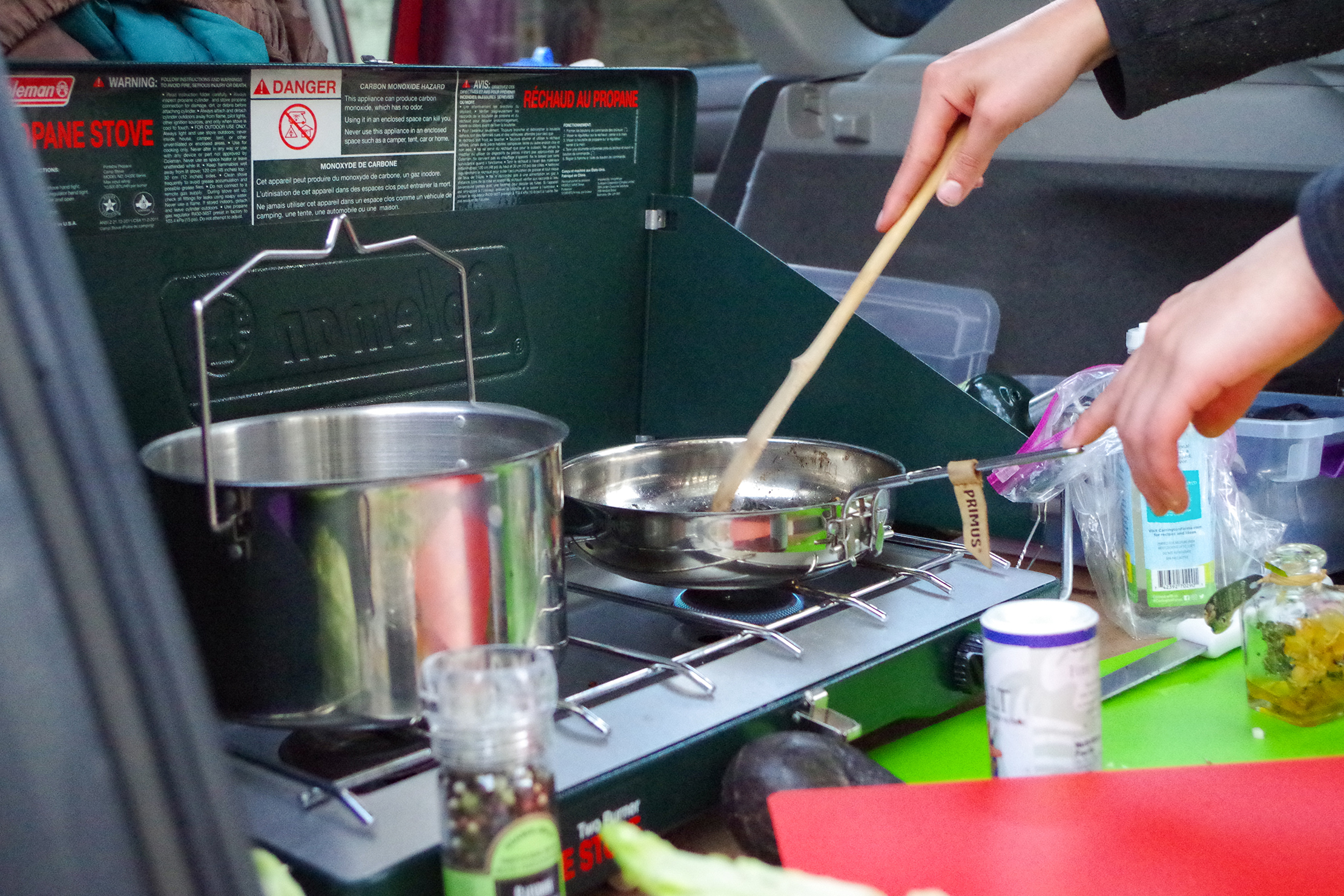
But, if cooking is something you’re interested in, know that it’s definitely doable! In fact, we recommend it. Not only is it a lifesaver if you have dietary restrictions, but it can also save you money, keep you healthy, and give you some great flexibility (you don’t have to worry about finding restaurants in rural areas or getting to a place after most restaurants are closed). All you really need to cook out of your car is some sort of camping stove (you can go deluxe or simple), a pot and pan, a chef’s knife, cutting board, stirring stick, a bowl or two, and an eating utensil—and dish soap and a sponge for clean-up.
Even if you don’t plan on cooking out of your car, it’s not a terrible idea to pack some cooking essentials anyway. One way to stretch your budget on the road is to cook while staying at Airbnbs, but they don’t always have fully-stocked kitchens. If you have your own setup, you’ll never have to worry about showing up only to discover the kitchen consists of two spoons and a ladle, but nothing else. Additionally, if you’re a cooking snob like some of our team members, you won’t want to rely on Airbnb supplies.
You can build a sliding platform in the back of your car to cook off of. Or, to make things simpler, just cook at places like rest stops, parks, and campsites with tables you can set your stuff out on. Now, you may get a few odd looks if you’re cooking out of your car at a rest stop. But those people are just jealous (…right?).
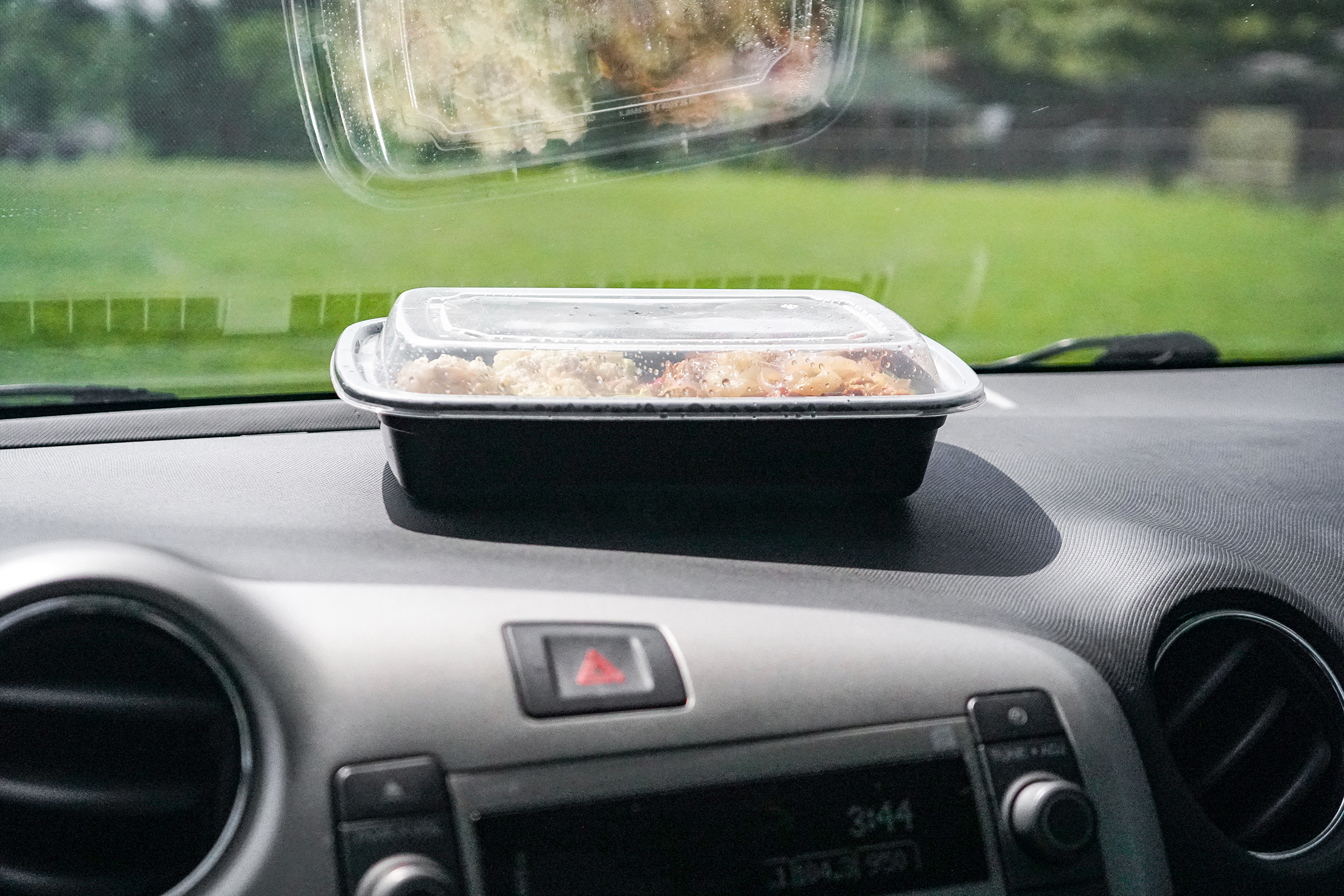
Also, don’t be afraid to eat the same meals all of the time. Cooking elaborate feasts out of your car can be time-consuming, exhausting, and, usually, requires a good amount of clean-up (which is also time-consuming and exhausting). So, give yourself a break and eat sandwiches, salads, and pasta an excessive amount of times. Food tastes better when you’re on the road, anyway.
There’s more to being on the road than driving…but it’s mostly driving.
Get four extra months of online security when you sign up for a 2-year plan with NordVPN! Check it out →
What To Do Once You’re on the Road
Finding Accommodations
Fun Fact: humans sleep. So, unless you’re a robot, you’re going to need a place to get some shut-eye. Yes, it’s time to talk accommodations.
Accommodations can book up quickly, especially if you’ll be venturing to tourist destinations. Once, a Pack Hacker team member called to book a campsite a month ahead of time during Florida’s peak season. The woman on the phone laughed. Booking time was six months out at that point. (Yeah, it was a popular campsite.) So, if you’re going to a popular area, make sure to look into accommodations far ahead of your trip.
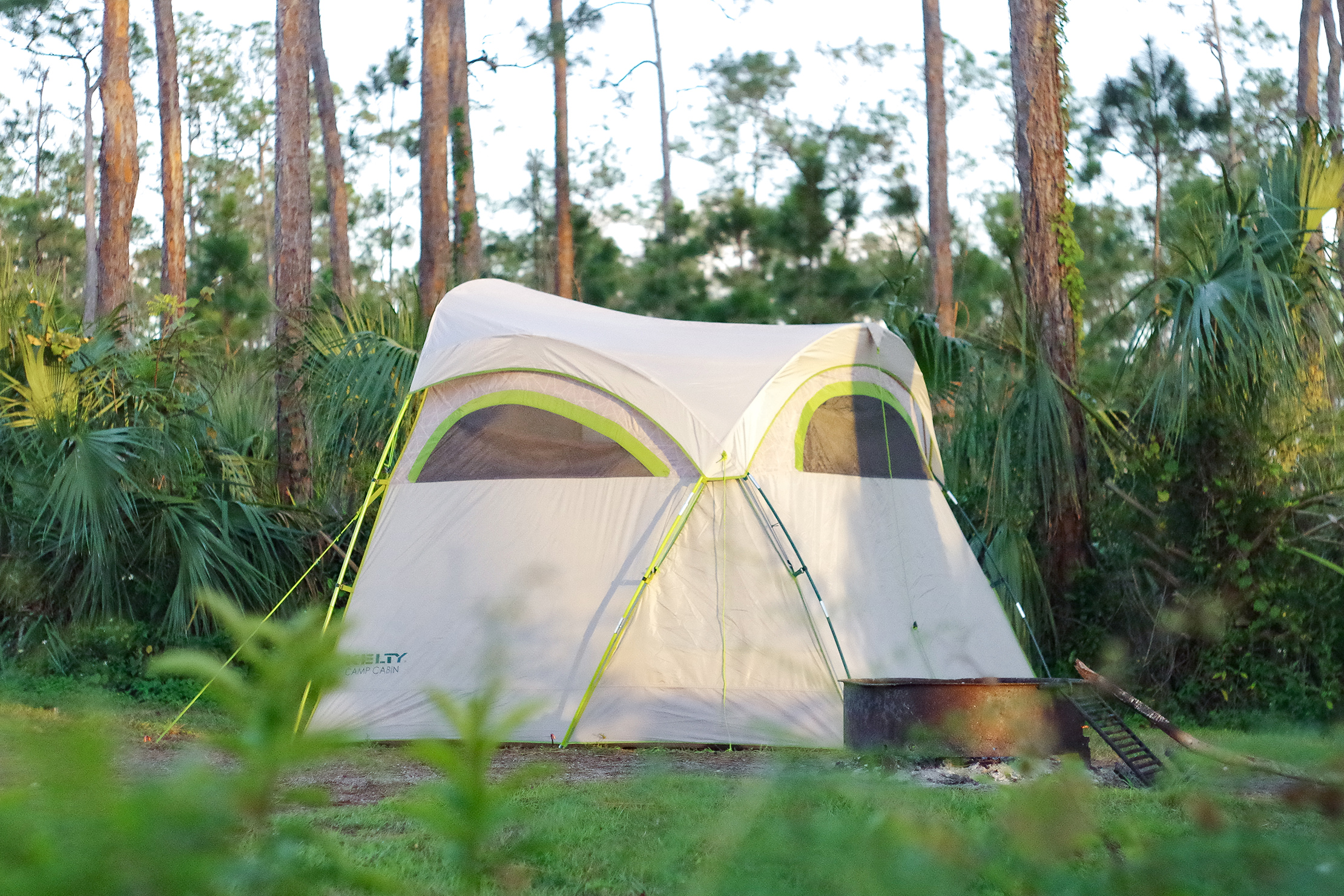
Note that you can’t book everything in advance. For example, some campsites are first-come, first-served. You will have to conduct some research to find out if these places are popular enough to warrant getting up at 5AM and driving full speed ahead to get there early enough to nab a spot. Frequently, there’s a phone number you can call the day you plan to arrive to ask how quickly the place in question is filling up. If you’ll be relying on a first-come, first-served accommodation, it’s a good idea to have a backup spot (or two) in mind, just in case.
If you’re embarking on a short trip, it’s easy to have your accommodations planned—and possibly booked—ahead of time and for the duration of your adventure. But, you can’t book accommodations for every single night you’ll be gone for a long-term trip. Still, planning a couple of days out—even loosely—will help with morale and peace-of-mind. This is especially true at the beginning of the trip when you aren’t used to road trip life. It can be a tough transition to go from living in a home—where you have a bed—to having to figure out where you’re going to sleep every night. Ease into it.
Have pets? A lot of places are pet-friendly, just make sure to look into the rules ahead of time.
Okay, with the general tips out of the way, let’s get specific. For easy digestibility, we’ll break this section up into bullet points. Here are the common places you can stay while road tripping—
If you want to sleep inside:
Friends or family
This is a great time to reconnect with your second cousin twice removed who lives in a mansion with a pool. Just make sure you give your cousin plenty of notice. And, this goes without saying, but we’ll say it anyway—be a respectful guest. Offer to make meals, clean up after yourself, pay for groceries, and thank your host for their generosity.
Airbnb, Vrbo, or similar platforms
You can stay in some awesome places through these platforms—on a boat, on the 40th floor in a downtown condo, in a beautiful cabin on top of a mountain, etc. You can also choose to stay in a shared Airbnb to save some money.
CouchSurfing
If you haven’t heard of it, CouchSurfing is a platform that connects you with people who are offering up their “couch” for you to sleep on. (We mean “couch” in the colloquial sense. Frequently, it’s actually a spare bed.) The best part about it is that it’s free! It also connects you with people who are (frequently) interested in hanging out.
Hotels / Motels / Hostels
Need we elaborate?
If you want to camp:
Campsites
You can find campsites in National Parks, State Parks, County Parks, Metro Parks, or through private companies. If you don’t like to camp per se, but still want to enjoy these places, they often have cabins that you can rent.
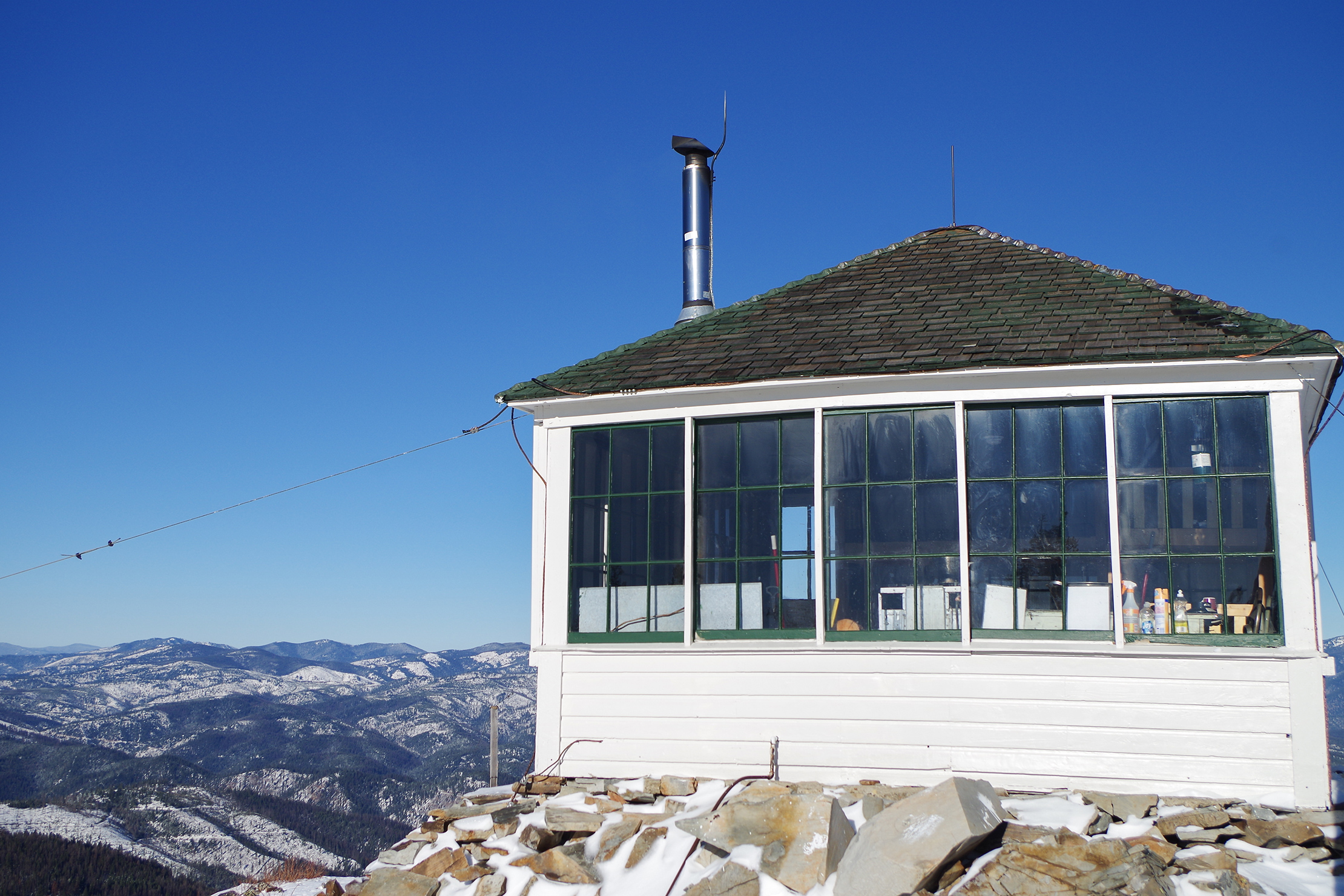
HipCamp
HipCamp is essentially Airbnb, but for camping. You’ll find accommodations that range from a random plot of land to a goat farm to a backyard to some elaborate setup in a tiny house.
Bureau of Land Management (BLM) and National Forest land in the U.S.
Usually, you can dispersed camp for free (!) on BLM areas and in National Forests across the United States. (Frequently, you can find similar places in other countries. Crown Land in Canada, for example. It’s worth looking into if you’ll be road tripping outside of the U.S.) However, occasionally areas will be closed to camping due to any number of factors, including environmental sensitivity. Make sure you respect any signage that denotes this.
Also, keep in mind that these “campsites” are highly primitive. Meaning there are no designated sites, no water, and no bathrooms. If you’re not an experienced camper, you might not have a good time. Finally, be respectful of these places. They don’t have trash cans to toss your granola bar wrappers, so take your granola bar wrappers with you. Leave it nice for the next guest (even if that guest is a bear).
You also don’t have to “camp” in the traditional sense at any of these places. If you don’t have a tent, you can always sleep in your car.
If you want to sleep in your car:
We talked about this oh-so-long ago at the beginning of this guide, but if you’re comfortable with the idea, sleeping in your car can save you money. Just make sure to trust your gut. If you’re uncomfortable parking at a certain spot—leave! (We’ll talk more about safety in the next section of this guide.) Also, in certain areas, sleeping in your car may be illegal. So, make sure you do your research/know the law before parking for the night.
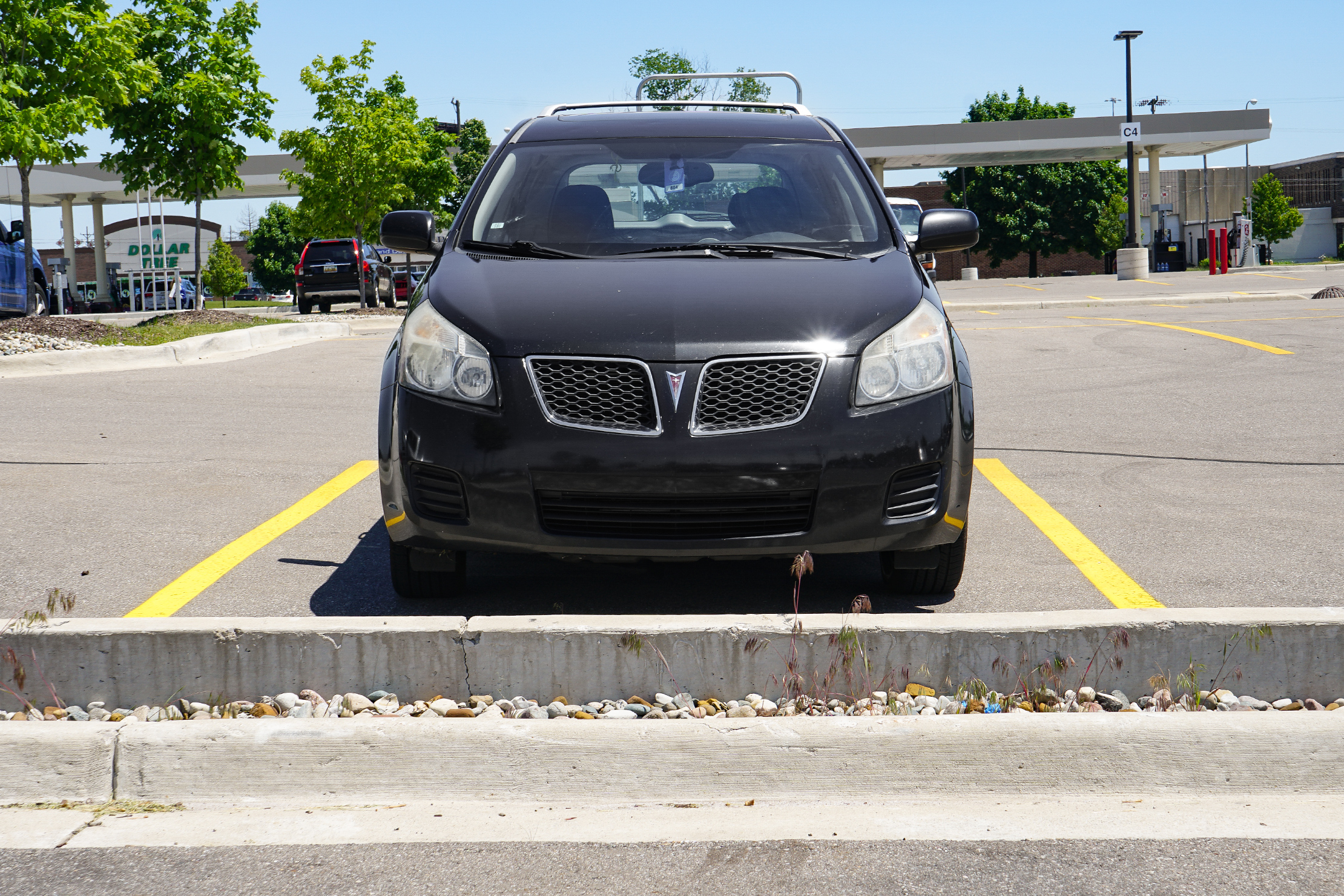
Walmart & Sam’s Club parking lots
Yes, it’s true. You can park your car and sleep in Walmart and Sam’s Club parking lots. Supposedly, Sam Walton set this up himself, but it’s unclear whether or not that’s true or just an urban legend. That all said, not all locations allow this, so call ahead of time. The great thing about this option is that a huge chunk of Walmart stores are open 24/7, so you have access to a bathroom whenever nature calls.
Cabela’s parking lots
Again, this is highly dependent on location. So, call ahead.
Rest stops and truck stops
These can be convenient because they’re right off the highway, so you can pull over, get some shuteye, and quickly get back on the road. Note that not all rest stops allow this.
In a neighborhood that allows street parking
In certain cities and areas across the U.S. and world, it’s against the law to sleep in your car outside of designated areas. So, look into the city regulations before you get there. You’ll also want to make sure that street parking is allowed in whatever neighborhood you choose, otherwise, you might wake up to a ticket on your windshield. To be frank, sleeping in your car in some random neighborhood can be a stressful experience. Depending on your personality, don’t expect to get the best night’s sleep.
RV parks
Some RV parks and campgrounds frown upon people sleeping in anything that’s not an RV or trailer, but frequently they won’t care.
There are several websites and apps to help you find places to camp and/or park your car. They include—
And if you’re curious about road tripping with an RV but don’t want to buy one, take a look at RVshare, which is like Airbnb for RVs.
Staying Safe on the Road
You can’t eliminate risk altogether, but there are some things you can do to minimize it. Above everything else, listen to your instincts, even if the safer choice isn’t the most convenient choice. Yes, it may be a bummer to drive another hour after arriving at what was supposed to be your sleeping spot, but if it doesn’t feel right then it’s worth driving that hour. Bottom line—if you’re uncomfortable in an area, don’t question yourself, just leave!
Remember to assess every situation and decide whether or not you think it’s worth whatever inherent risk is involved.
That said, here are some other things we do to stay as safe as possible—
Tell people where you’re going.
Give friends and family back home at least a loose idea of where you are and where you’re going, especially if you’ll be going into an area without cell service. An added benefit is that your friends and family won’t freak out if you go off of the grid for a few days.
Don’t rely on your cell phone for navigation.
It’s super common to lose service while road tripping (depending on your route, of course). So, try and make sure you won’t be screwed when that happens. Keep a paper map or atlas in your car in case you get lost in the middle of nowhere without service.
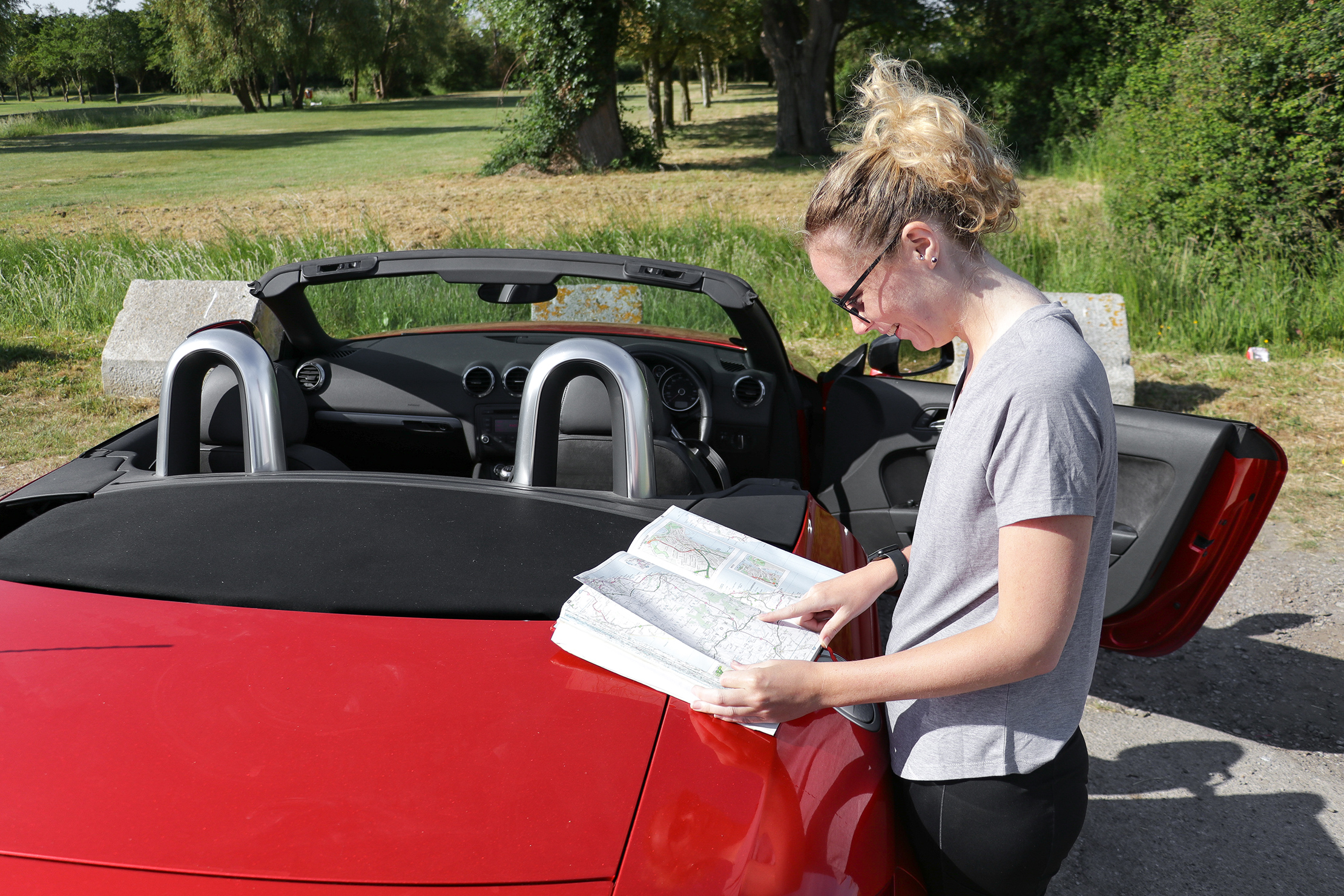
Change out drivers and/or know your limits.
Yes, there are usually boring stretches of your road trip that you will want to power through. But driving when you’re bleary-eyed and running on caffeine fumes isn’t safe. If you’re traveling with multiple people who can drive, take turns. If not, find a safe place to pull over and stop for a rest. Additionally, if you’re the only driver, don’t plan your route around long drives.
Decide if you’re comfortable driving at night.
Some people say to avoid driving at night altogether, but it comes down to personal preference. Keep in mind that it’s safer to drive at night in areas with more established roads and street lights. A poorly-lit road could be hiding gigantic car-ruining potholes—not to mention night blindness, sharp turns on curvy mountain roads, animals, and other things that go bump in the night.
Scope out your accommodations.
Depending on your comfort level of an area, it may be a good idea to try and get to your sleeping destination in the daylight, so you can check it out. This is true regardless of what your accommodations are if you’ve never been to that area or are unfamiliar with it—including campsites, Airbnbs, hotels, and all the options in the above Accommodations section (well, maybe not your cousin’s house). Of course, that’s not always the case. For example, if you’re going to sleep at an established National Park campsite, you will probably be fine showing up in the dark.
Get gas when you can.
Nobody wants to be nervous about running out of gas (or to actually run out of gas). Especially not at night in a rural area when you don’t have cell service and the closest town is miles away. Besides, it’s usually cheaper to buy gas in more populated areas where there’s competition. Depending on where you are—try not to go below ½ or ¼ of a tank.

Pack a first aid kit (and know where it is!).
It seems like overkill…until you need it.
Research.
Try to get a feel for the area you’ll be traveling to (if you’re not already familiar) before you get there. Learn local rules/laws/customs and what potential crimes are common in that area. But don’t go overboard. Any place can seem scary if you’re only focused on stats.
Have backup accommodations.
It may be a good idea to have a couple of backup sleeping spots in mind, just in case you show up to your Airbnb/campsite/wherever and feel unsafe. Plus, if you have a backup in mind, you’ll be less likely to second guess yourself and more willing to just leave.
To limit the need for this, it’s a good idea to make sure you’re comfortable with your accommodation plans to begin with. For example, if you’re road-tripping by yourself, you may be uncomfortable camping and would prefer the security of a hotel.
Be aware of weather.
Don’t take a road trip in the Florida Keys during Hurricane season, for example. You’ll also want to pay attention to fires, tornados, thunderstorms (if you’re sleeping in a tent and because, as we mentioned earlier, rain isn’t that much fun), etc.
Lock your doors.
Okay, yeah, this seems obvious. But it can be easy to forget in the chaos of lugging your stuff into a hotel/Airbnb/campsite. Remember, everything you own (or are living with while traveling) is in the car.
Be prepared to drive away.
By “prepared” we mean the willingness to swallow your pride, but also to literally be prepared to drive away. Know where your keys are and have the driver’s seat cleared off or able to be cleared off quickly.
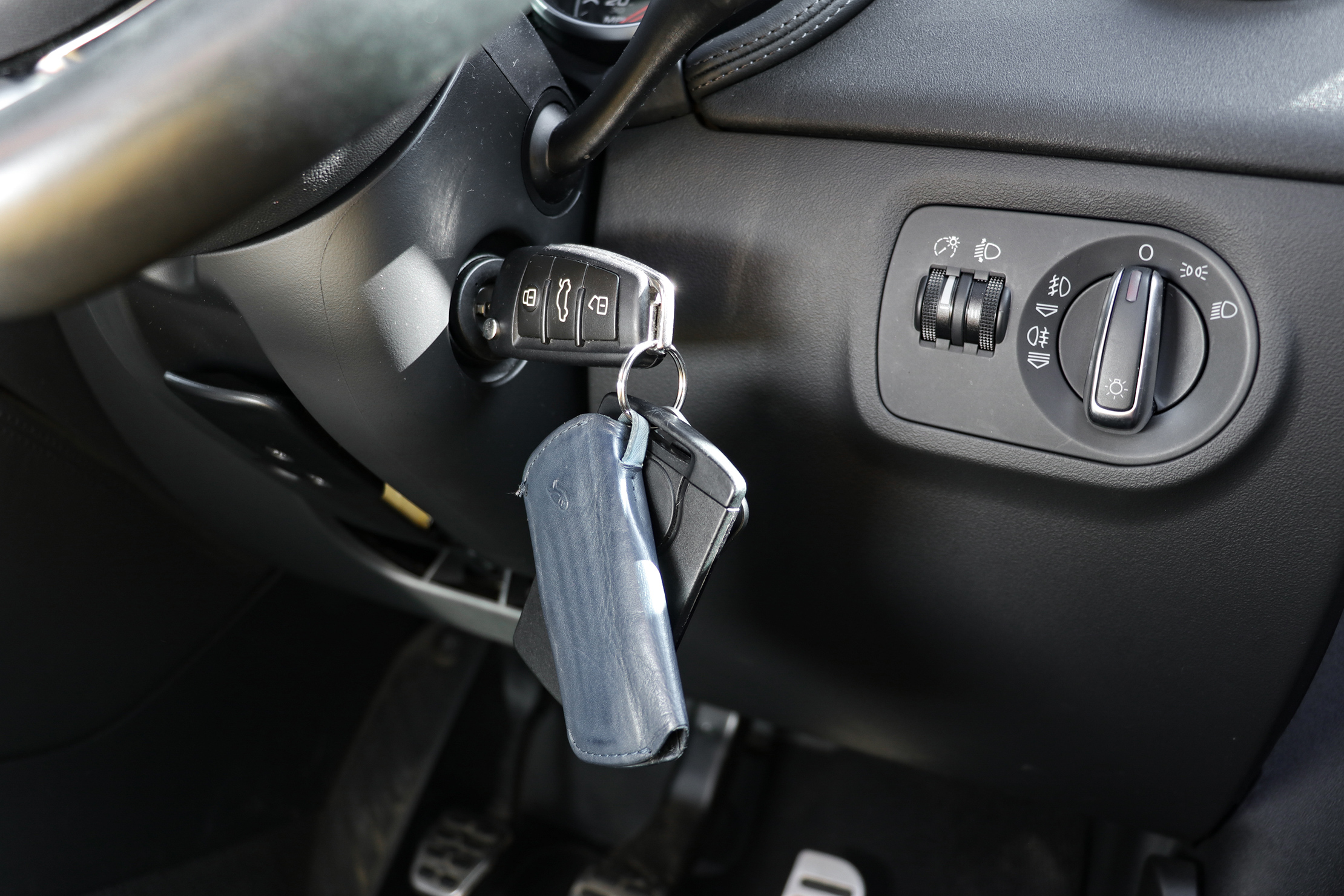
Tint your windows.
Not only do tinted windows help block out the sun for a more comfortable drive, but they ensure your stuff (and you!) aren’t on display. People won’t be as tempted to rob you if they can’t see all of the goodies you’re keeping in your car. Note that there are laws that regulate how tinted your windows can be, which differ from area to area.
Park under lights.
People are less likely to mess with you or your stuff if you park in the thick of things beneath a street lamp. This tip applies whether you’re parking your car and sleeping elsewhere—or if you’re sleeping in your car. For the latter, it can be tempting to park in the darkest, quietest corner of a parking lot (for the chance at a deeper sleep), but resist it.
Keep your cell phone charged.
Just do it.
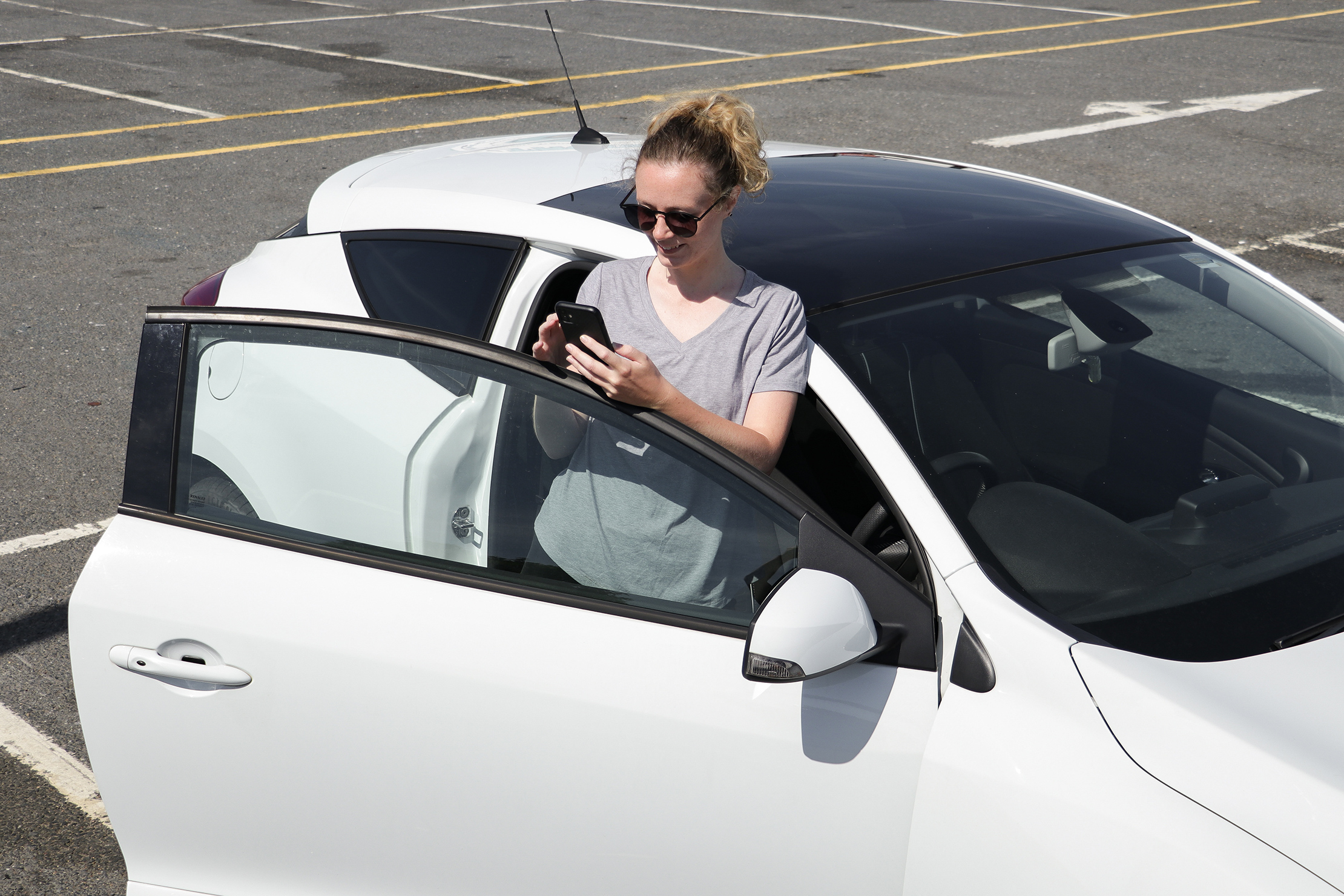
Consider renter’s insurance.
Depending on your policy, it may cover anything that gets stolen out of your car. (Homeowners insurance may cover this too.) And the previously-mentioned packing list will help you keep track of what was stolen if anything goes missing. It can be hard to keep track of all of your belongings in your head.
Consider extra precautions.
If you’ll be traveling to remote places with heavy bear populations, or want to be extra cautious, you can keep a can or two of bear spray with you. But make sure you are careful with it. Bear spray is no joke. You don’t want to accidentally deploy it in an enclosed space.
How To Stay Healthy (and Hygienic) on the Road
As is true with most vacations, it can be easy to slip into not-so-healthy habits while on the road. But don’t forget about your health. It can be so, so, so tempting to live off of fast food and energy drinks, but that can be hard on your body—even if your road trip is only a weekend long. We’re not saying don’t enjoy some quick, unhealthy meals. Milkshakes, french fries, and burgers can be excellent road trip fuel. But try and balance that out with healthier choices. Eat some fruit and veggies and, remember, water is your friend.

Also, try and get your blood moving. At rest stops, take a moment to walk around and stretch. Not only is moving good for you, but it’ll help stop you from cramping (a common side effect of sitting in the car for long periods). On longer road trips, try and sneak in intentional workouts. We have written up an entire blog post about how to work out when traveling, so head over there for specific tips.
As far as hygiene goes, keep your car as clean as possible! We are so passionate about this tip that we have decided it deserves an exclamation point. Get rid of food wrappers and packages as soon as you can. Seal off food containers, make sure caps are on tight on drinks to avoid spills, be conscious of eating messy things while driving. Trust us, it’s much nicer to sit in a clean, not-smelly car. We also suggest giving your car a thorough wipe down and vacuuming every now and again if you’ll be on the road long enough to warrant it.
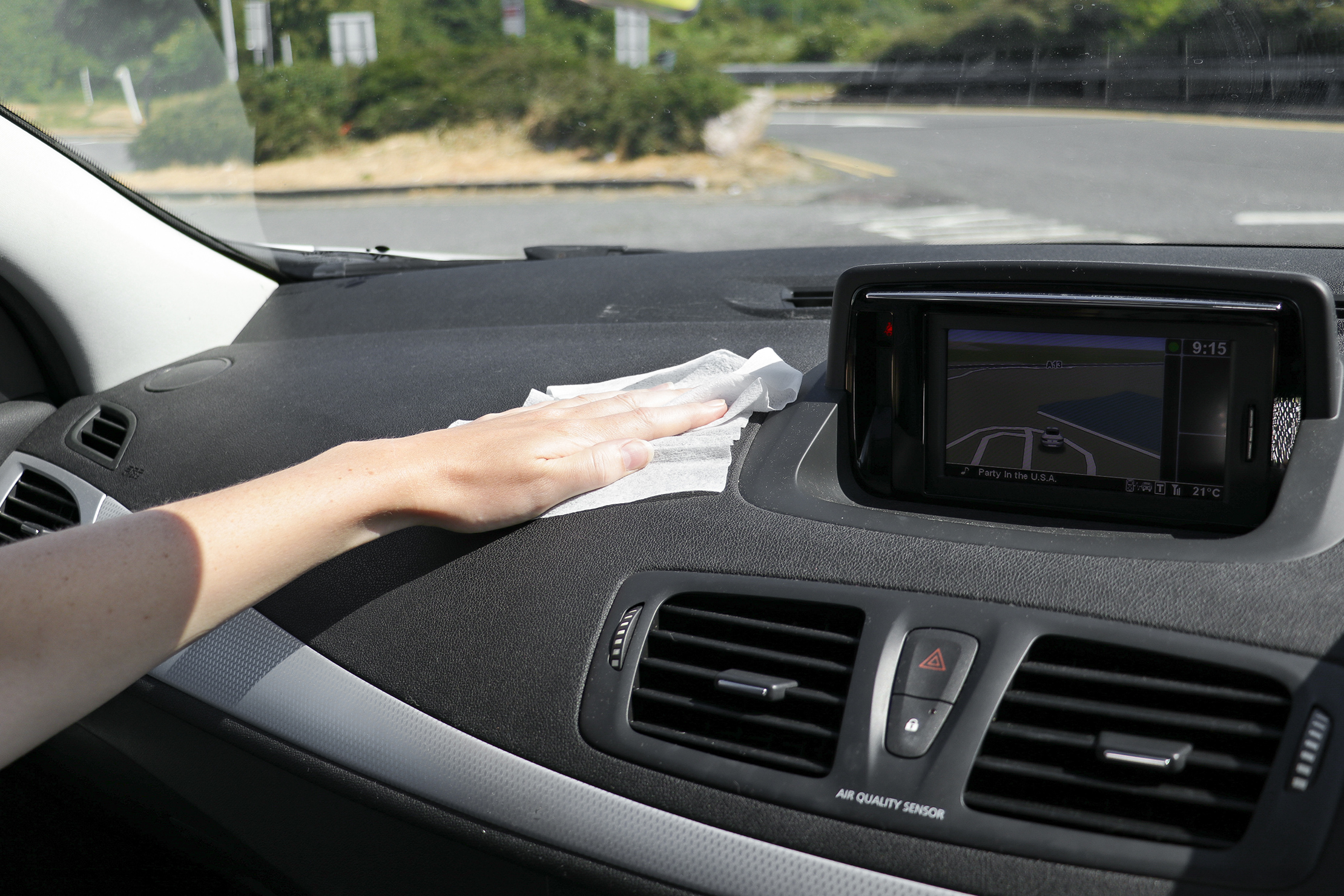
If you’re going on a short trip, that’s really all you need to know. But if your road trip will span a couple of weeks or more, there’s a bit more you probably want to consider. Including:
Laundry
As far as we’re concerned, laundry is the worst. So, you would think that laundry without easy access to a washer and dryer—or laundromat you’re familiar with—is doubly the worst. But, it’s surprisingly easy. Especially since you’ll (likely) have fewer clothes to launder while road tripping (and, let’s be real, lower standards for how clean your clothes need to be before you throw them back on).

First of all, consider investing in a few pieces of specialty, travel clothing that have antimicrobial properties or anti-stink treatments. We’re big fans of Merino wool clothing—we’ve even written an entire guide about Merino wool and helped design a collection of travel-focused Merino wool clothing with Wool & Prince. Clothes that are built to “fight the funk,” don’t need to be washed as frequently as less technical alternatives.
And, as we mentioned at the beginning of this guide, it may be a good idea to separate out nice clothing that you’ll wear inside a restaurant from driving-for-twelve-hours-and-then-sleeping-in-your-car-clothing. That way, you can still smell nice when you need to without having to do laundry all the time.
But you can’t avoid laundry forever. Luckily, you’ll frequently find washers and dryers inside Airbnbs (double-check on the listing) and laundry service is often available at hotels and motels. Of course, if you plan to stay with friends or family, you can use their washer and dryer. Plus, most cities have laundromats—some even offer cheap laundry service, so you don’t have to spend the day at the laundromat.
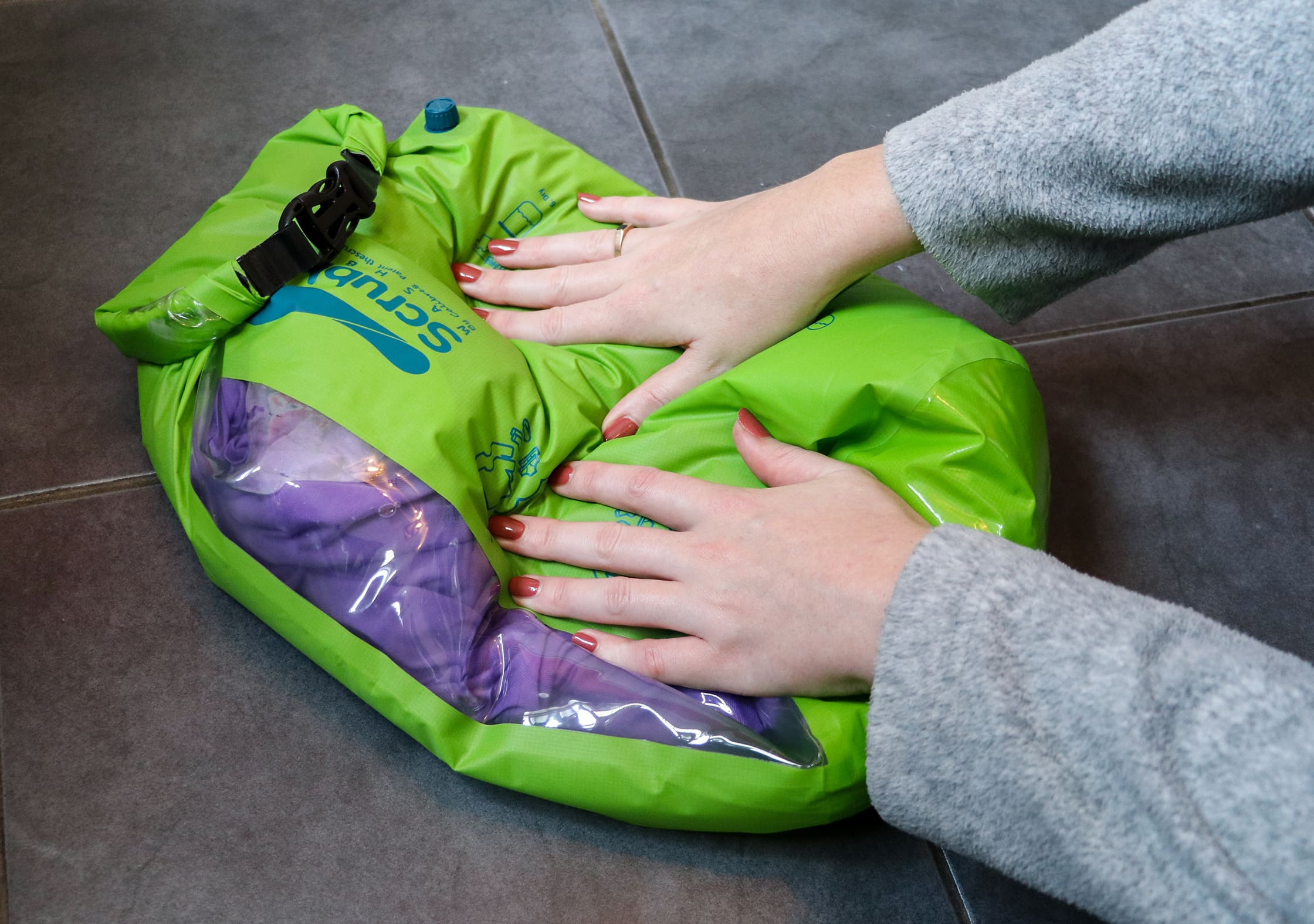
If you’re road tripping in very rural areas, you may consider hand-washing your stuff. While optional, gear like the Scrubba Wash Bag can help you get your clothes extra clean.
Finally, we suggest packing your own laundry soap. That way, you don’t have to worry about it being available at the laundromat or whatever Airbnb you’re staying at. We recommend dry soap over liquid soap because it won’t cause a gigantic mess if it spills.
Showers
If you’ll primarily be staying at hotels or Airbnbs then you’ll be good to go as far as showering is concerned. But if you’re planning to spend most of your trip camping, you may need to get creative.

Some campsites have showers, and if they do, they’ll usually advertise that information online. If a phone number is listed, you can also call and ask. Sometimes, these showers cost money (and, frequently, only accept coins as payment), so plan ahead. It’s heartbreaking to pull out your toiletry kit, throw on your shower shoes, and toss a towel over your shoulder, only to realize you need quarters to actually turn the water on. You can purposefully hit up these campsites whenever you have a need to get clean. Along the same vein, consider staying at an Airbnb or hotel every couple of weeks for a good refresh.
Additionally, you can shower at truck stops if you get really desperate. But it does feel kind of odd to do in practice—and some of these places are strict about only being available to truckers—so we don’t recommend relying on truck stop showers.
For longer trips, you may want to buy a gym membership for a common chain that allows you to go to all of their locations (for example, a Planet Fitness Black Card). Gyms are a great place to shower as their showers are usually clean with decent water pressure and heat (not always true for campsite showers). Plus, you can sneak in a quick workout.
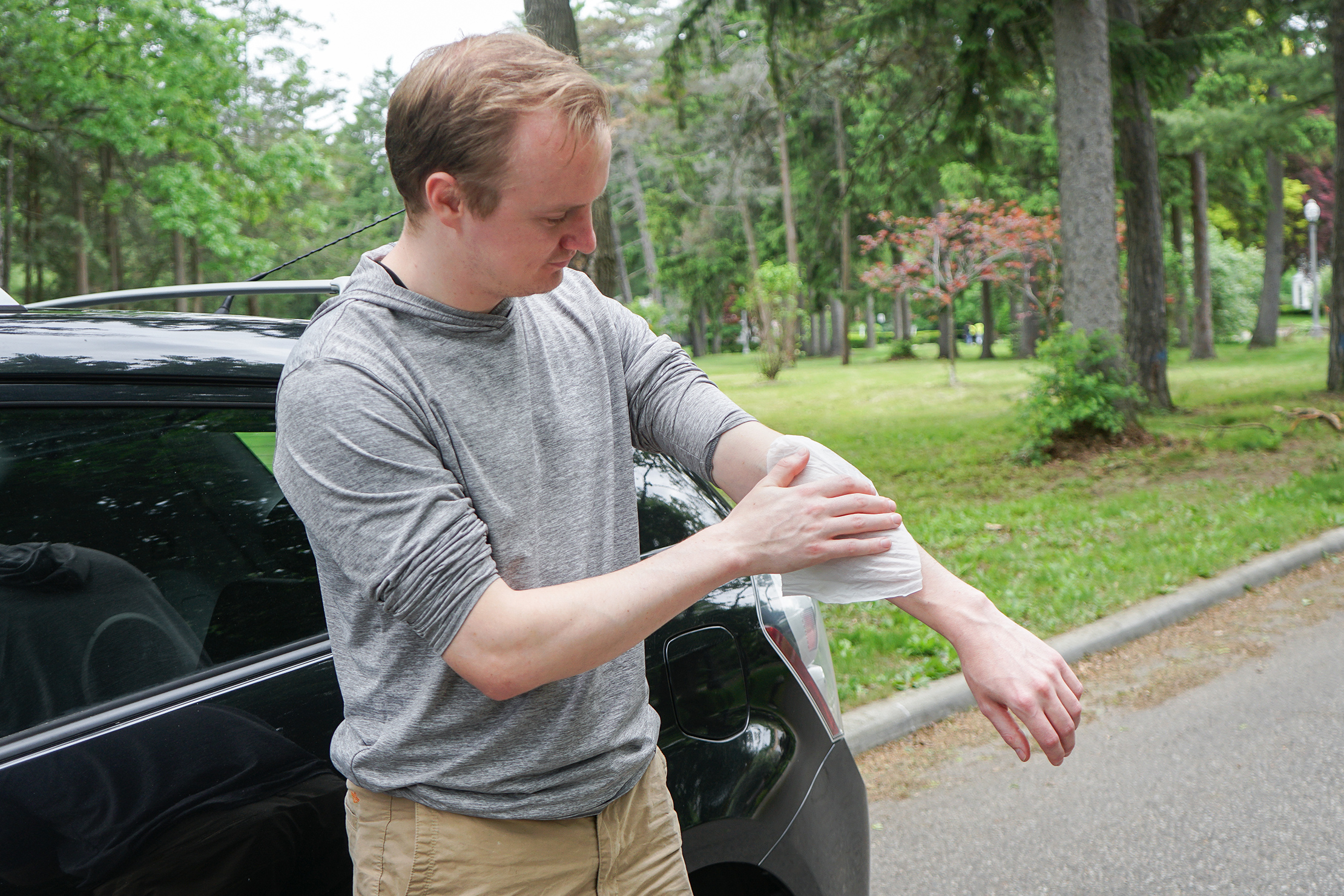
To stretch out the time in between showers, you can wipe off with bath wipes. But, at some point, just embrace the fact that you’re going to smell like a combination of B.O., campfire, sunscreen, and bug spray. It’s all a part of the experience.
More Road Trip Tips
Not everything we have to say neatly fits into categories, so the rest of our tips aren’t thematic. But they are important.
Pay attention to the speed limit.
Not speeding is better for gas mileage anyway, but if you’re traveling in the back roads of wherever, you can end up traveling through a town where speed limits drop from 50 to 30 super suddenly. Cops love to pull you over for that—as multiple members of our team can attest to.
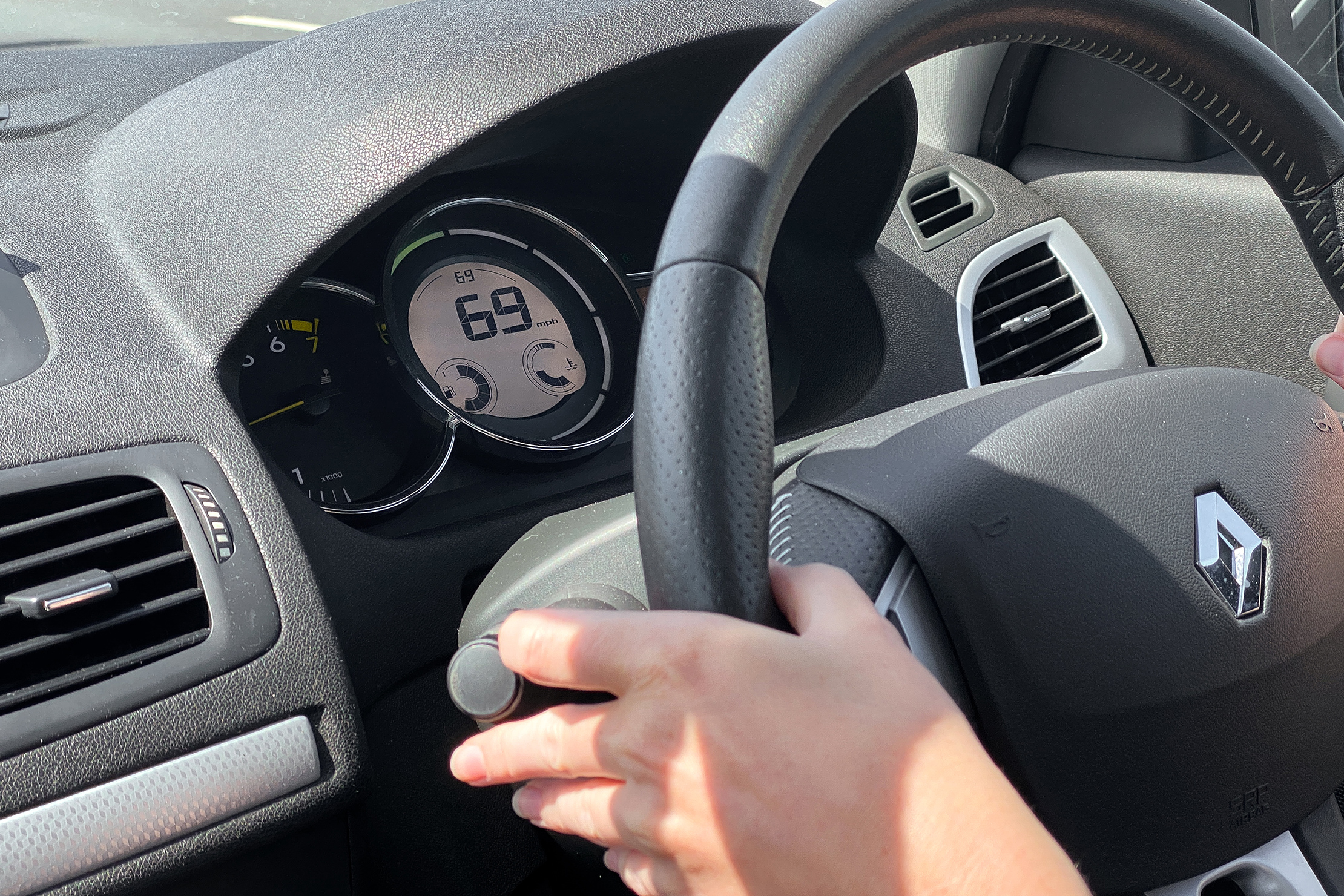
Talk to people.
More often than not, people are friendly. So, ask for help when you need it. Once, a Pack Hacker team member got lost in a rural area (with no paper map because this informative guide hadn’t been written yet) and did the cliche ask-for-directions-at-a-gas-station-move. What seemed like half the town—almost everyone inside of the gas station—helped her navigate to her destination safely. Also, people are a great way to learn about good local places to eat, shop, play, etc. Just don’t go giving strangers your entire itinerary #safetyfirst.
Try to eat and play locally.
Choosing local businesses will help you get a feel for the area and support the local economy. Plus, it’s really fun to learn about your destinations. Do the National Park ranger activities, take tours, try Airbnb experiences, and so on. You’ll get a lot out of them. (Well, mostly. Sometimes, they’re duds.)
Consider a test run (if you are going on a longer trip).
This only applies to longer trips. If you plan to go for a weekend, you’re gonna be fine. It’s only two or three days. Don’t stress—you can survive. For long trips, go for a week or two and see what works and what doesn’t, what stuff you use, and what you don’t. That way, you can tweak your setup before your big trip. But, keep in mind, no matter how prepared you are, not everything will go the way you expect.
Take a break.
If you’re on a long-term road trip and have to work throughout it to support yourself, try to take a week or two off to enjoy your road trip without worrying about where you’ll get WiFi next.
Things will go wrong.
They just will. Try to keep a flexible mindset.
Just go.
At some point, you have to forget the rules, trust that you’re as prepared as you can be—and just go.
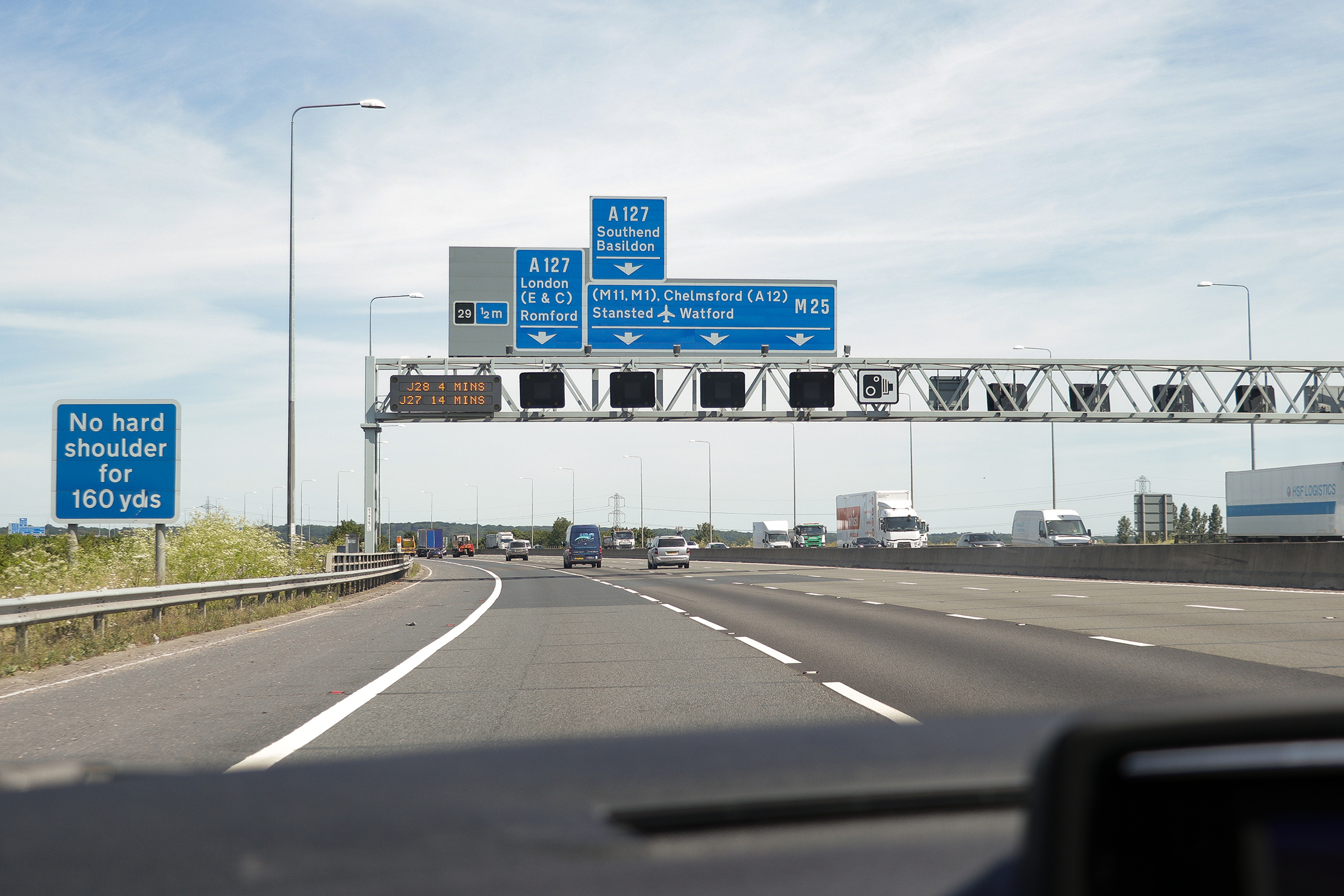
Don’t forget the most important rule.
Get four extra months of online security when you sign up for a 2-year plan with NordVPN! Check it out →
Hit the Road
Phew. You did it. You finished the guide. Trust us, we know that all of this information may seem a little intimidating, but don’t feel like you have to do it all. If you would rather not keep your car clean then, by all means, let it become your trashcan. If you hate planning, just hit the road and turn whenever you feel inspired to turn. If you want to eat fast food three times a day, eat fast food three times a day.
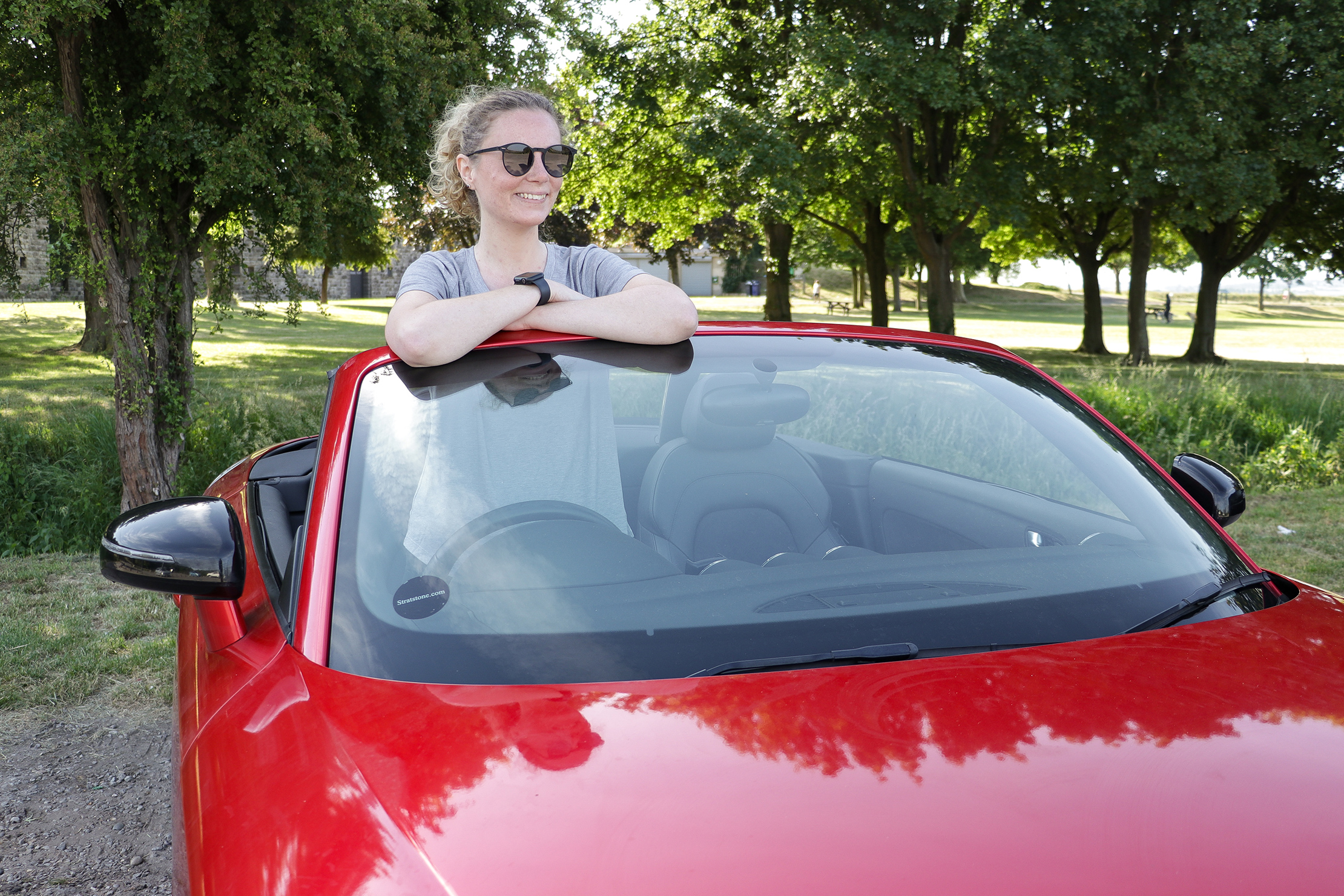
Our team has come up with everything in this guide based on our collective road trip experiences, but what works for us may not work for you. Take what’s helpful and leave the rest. What we’re trying to say is—you do you. At the end of the day, road trips are supposed to be fun, so we’re going to leave you with our number one tip (and the cliche mantra of childhood sporting events everywhere)—don’t forget to have fun!
P.S. If you have some road trip tips of your own that we’ve missed—please let us know by tagging @packhacker on Instagram! We would love to hear them.
